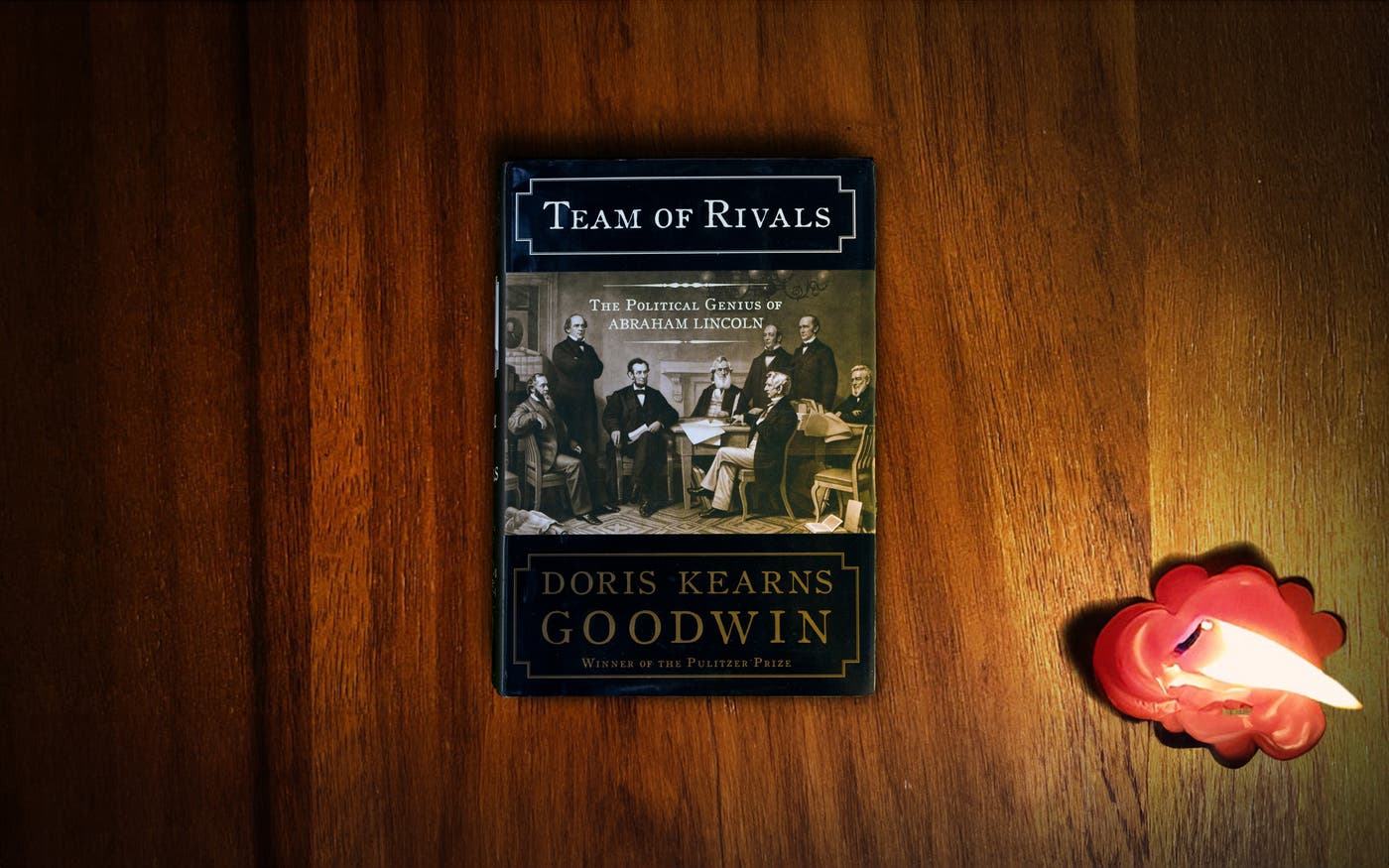
Team of rivals
The best guide to leading a country
Doris Kearns Goodwin’s brilliant biography of Abraham Lincoln is more relevant than ever.

I’m fascinated by Abraham Lincoln. I’ve read a ton about him, and I’ve collected Lincoln-related materials, including a draft of the Emancipation Proclamation and his handwritten copy of the victory speech he gave after being re-elected president. Years ago, I read Doris Kearns Goodwin’s book Team of Rivals: The Political Genius of Abraham Lincoln and was blown away. Of all the books I’ve read about the 16th president of the U.S., Team of Rivals is the best.
Lately I’ve been thinking about Goodwin’s book because it feels very relevant in 2022. There are significant parallels between the current moment and the 1860s, when the nation was dealing with violent insurrection, difficult questions about race, and ideological divides between states and regions. Team of Rivals has a lot of insights about Lincoln that leaders can learn from today.
It is amazing for example to read about how Lincoln was able to push the Thirteenth Amendment through a Congress made up exclusively of white men. Although Lincoln does not have a clean record on race—some modern critics in fact label him a racist because of some positions he held—I came away from Team of Rivals more convinced than ever that Lincoln was a profoundly moral man who ranks as America’s greatest president.
He opposed slavery even as a child growing up in the slave state of Kentucky. As he said in one of his famous debates with Senator Stephen Douglas, someday “all this quibbling about … this race and that race and the other race being inferior” would disappear. And then he was willing to invest everything he had to end slavery when he was elected president.
Lincoln’s private persona was exactly what he conveyed in public. Take for example his conversations with the formerly enslaved leader Frederick Douglass. Lincoln called Douglass “one of the most meritorious men in America” and treated him that way, inviting him to the White House to get his advice. Although Douglass had previously criticized Lincoln’s slowness to act on behalf of enslaved people, Goodwin reports that he was impressed by their long meeting. “The president is a most remarkable man,” Douglass told a friend. “I am satisfied now that he is doing all that circumstances will permit him to do.”
Team of Rivals also gives you a deep appreciation for several other traits that made Lincoln so special. He was secure enough to pack his Cabinet with the rivals he had defeated in the presidential campaign, and he was able to ignore or absorb their backstabbing. Once, War Secretary Edwin Stanton ignored a direct order from Lincoln and called him a “damned fool” behind his back. When he heard about the insult, Lincoln smiled and said, “If Stanton said I was a damned fool, then I must be one, for he is nearly always right, and generally says what he means.”
Lincoln was intellectually secure. Despite having a cumulative total of one year of formal schooling and none of the pedigree that his Cabinet members enjoyed, he never had to prove that he was the smartest guy in the room (even though he almost always was).
Lincoln also controlled his emotions. Because he suffered a lot of loss throughout his life—the death of his mother when he was only 14, the death of two sons, and the carnage he saw on battlefields throughout the war—he was prone to falling into deep melancholy. But his losses fueled his empathy and never left him incapacitated.
Finally, he was great about learning from his mistakes. After the Union Army suffered a humiliating defeat in the first full-scale battle of the Civil War, Lincoln visited with his officers and troops so he could learn first-hand what had gone wrong. Then he stayed up all night “drafting a memo incorporating the painful lessons of Bull Run into a coherent future military policy,” as Goodwin writes.
Whenever I have tried to solve a tough problem, whether it’s in technology or philanthropy, I’ve started by looking for great examples from history. In these turbulent times, Abraham Lincoln is as good a model as you will find.
On the record
How Katharine Graham found the courage to challenge Nixon
Personal History contains valuable lessons about leadership and finding strength in vulnerability.
July 5, 1991 was one of the most important days of my life. My mom was hosting a get-together at our family’s favorite vacation spot in Hood Canal, WA. One of her friends had invited Warren Buffett, and I immediately hit it off with him, kickstarting a relationship that would, among other things, lead to the creation of the Gates Foundation.
But Warren wasn’t the only legend in the room. I remember him introducing me to his old friend Katharine Graham, one of the most well-respected newspaper publishers in the world. Even after all these years—and after her death in 2001—I still treasure the friendship I began with Kay that day.
Kay is best known for leading the Washington Post through the Watergate crisis, but her remarkable story goes way beyond her fights with the Nixon White House. That story is told in her riveting memoir Personal History, which came out in 1997—just a few years before she passed away—and won the Pulitzer Prize for Biography.
Kay’s father purchased the Washington Post and saved it from bankruptcy when she was a teenager. In 1946, he made Kay’s husband, Philip Graham, the publisher of the paper. Although this decision sounds strange today—Why would you hand over the family business to your son-in-law instead of your own child?—the thought of putting a woman in charge was unthinkable in that era. “It never crossed my mind that he might have viewed me as someone to take on an important job at the paper,” she writes. Kay was expected to devote her life to being a good wife and mother.
But life with Phil wasn’t easy. He suffered from bipolar disorder at a time when treatments for mental illness were crude and ineffective. The chapters about his mental decline are devastating. Kay describes how Phil had to be sedated after suffering from a manic episode at a publishing conference. A few months later, he dies by suicide during a stay at the family’s country home. Kay is the first person to find his body.
While she was struggling with grief, Kay found herself thrust into a new role: president of the Washington Post Company and the publisher of a major national newspaper. That isn’t an easy job under any circumstances, but several of Kay’s male colleagues made it harder than it needed to be. “I didn’t blame my male colleagues for condescending—I just thought it was due to my being so new,” she writes. “It took the passage of time and the women’s lib years to alert me properly to the real problems of women in the workplace, including my own.”
Still, Kay internalized some of the skepticism, and she is pretty harsh on herself throughout the book. She blames herself for Phil’s suicide and describes her business acumen as “abysmally ignorant” when she takes over the Post. I understand her impulse to be critical of her younger self—I often felt frustrated by how I acted as a kid when I was writing my own memoir, Source Code. But it can be difficult to read at points in Personal History. I wish Kay knew how special she was.
Her story is a powerful reminder that strong leaders don’t always come in the form you expect. What Kay sees as weaknesses end up becoming her strengths. Because she didn’t know much about the newsroom when she took over in 1963, she asked a lot of questions. A more experienced publisher might have come into the job with preconceived notions about how to run things—but Kay listened to her new colleagues, and she took the time to learn how they worked. That trust in her people would pay off years later during the Watergate scandal.
I was a teenager during the Watergate years, and I remember reading about it in the paper. Many people focus on two specific events when they talk about Watergate: the break-in at the Democratic National Committee in June 1972, and President Nixon’s resignation in August 1974 after secret recordings revealed his administration’s involvement in the burglary and subsequent cover-up. But during the more than two years between those two points, the Washington Post reported relentlessly on the scandal.
Nixon himself tried to bully them into giving up, but Kay stood by her newsroom. She protected their editorial independence, never asking her reporters to censor or soften their reporting. At one point, John Mitchell—the chair of Nixon’s re-election campaign and former Attorney General—told a Post reporter that Kay was going to get a certain part of her anatomy “caught in a big fat ringer.” She read about it in the paper the next day.
Kay risked the company’s reputation and financial health to protect journalistic integrity, even in the face of potential lawsuits and calls to discredit the paper. The Post almost folded at one point when the Nixon administration threatened to pull the broadcasting licenses for several TV stations owned by the Washington Post Company. (Despite being the namesake of the company, the Washington Post itself was not profitable at the time. The business relied on local broadcast stations to stay afloat.)
This is where Warren enters the story. He believed the Washington Post was undervalued, and in 1973, Berkshire Hathaway bought a 10 percent ownership share—enough to keep the company going while making sure that Kay remained in control. He eventually became a trusted advisor and a close friend to Kay, which I saw firsthand years later in Hood Canal.
Warren has always hated that Kay was left out of the movie All the President’s Men, which came out just two years after Nixon resigned and received great critical acclaim. Without her leadership and bravery, the Watergate scandal might have faded into obscurity. Fortunately, the film The Post gave Kay her proper due. Meryl Streep was even nominated for an Oscar for playing her.
There is so much to Kay’s story—including her time with President Kennedy, the Pentagon Papers, and the pressmen’s strike—that I cannot mention all of it here. If you want to learn even more about her incredible life, I recommend starting with the new documentary Becoming Katharine Graham before reading Personal History.
Diving deep into Kay's extraordinary life is well worth your time. Her story offers more than just insights into a fascinating chapter of American history—it also reveals valuable lessons about courage, leadership, and finding strength in vulnerability.

History and their story
A memoir of love and politics in the 1960s
I loved—and finished—Doris Kearns Goodwin’s An Unfinished Love Story.
I picked either the best time or the worst time to read Doris Kearns Goodwin’s new memoir. As I finished it, I was also deep in the writing of my first autobiography. On one hand, reading a book as thoughtful and well written as An Unfinished Love Story inspired me to push myself even more as an author. On the other hand, Goodwin sets a daunting example. Trying to write as well as she does is like trying to sing along with Lady Gaga.
I’m a big fan of Goodwin’s—Team of Rivals is one of my favorite history books ever—so I wasn’t surprised that An Unfinished Love Story was so compelling. It starts with a clever conceit. Doris was married for 42 years to Dick Goodwin, a policy expert and White House speechwriter who played a crucial role in the Kennedy and Johnson administrations of the 1960s. Toward the end of Dick’s life, he and Doris started going through 300 boxes of papers and memorabilia he had collected—an exercise that led them to reopen an old debate about the relative merits of the two presidents, and especially the question of which man deserves more credit for the accomplishments of the Great Society.
The book is partly about Doris and Dick’s decades-long relationship, and partly about a pivotal time in American history. It works on both fronts.
I had never heard of Dick Goodwin before I read the book. I did know about Ted Sorensen, who had a major influence on Kennedy’s thinking and speeches; Dick Goodwin, it turns out, was just as important. He helped shape the Great Society, the most dramatic shift in America’s public safety net since Franklin Roosevelt’s New Deal. He was a senior advisor on Bobby Kennedy’s presidential campaign, and many years later, drafted Al Gore’s statesmanlike concession speech after the 2000 election. (Goodwin also led the investigation in the real-life game-show scandal that was the subject of the movie Quiz Show; he’s played by Rob Morrow.)
The book left me with more admiration for both Kennedy and Johnson. When the Goodwins began the project of going through Dick’s papers, each had clear opinions on the two presidents: Dick was a Kennedy guy who quit the Johnson administration in protest over the Vietnam war and the president’s domineering style, while Doris preferred Johnson’s political savvy and ability to get things done. She worked at the White House during the latter’s administration and became a confidante; after he left office, she went to Texas to help him with his memoir.
Sadly, the Goodwins’ project was cut short by Dick’s death in 2018. In the end, he and Doris came to see both presidents in a more nuanced way. After reading the book, so did I. Doris takes you behind the scenes so you can watch the two presidents and their teams figure out how to move their agenda forward, recruit good people, and explain their plans to the public. At the same time, she doesn't shy away from the contradictions and flaws in their characters, particularly in LBJ's case.
Doris’ personal experiences, and her retelling of Dick’s, make the history feel more real. She’s not just reporting on what happened—she can tell you what it was like to be there, using intimate personal details to bring the era to life in a way I hadn’t seen before. In one funny and revealing moment, Johnson complains that Dick Goodwin is getting too much attention from the media—to the point that he tells a reporter that no one by that name even works at the White House.
I think this book will resonate with a lot of different readers. For one thing, it’s hard to deny the similarities between the 1960s and today—a time of political upheaval, generational conflict, and protests on college campuses. Whether you already know a lot about the ’60s or you’re just dipping your toe into those waters, whether you want a deep dive into the art of political writing or a charming story about a married couple who adored each other, you’ll get it from An Unfinished Love Story.

On the frontlines
The Women gave me a new perspective on the Vietnam War
Kristin Hannah’s wildly popular novel about an army nurse is eye-opening and inspiring.
When I was 15 years old, one of my teachers took me to my first Vietnam War protest.
My teacher ended up getting in a bit of trouble for it, but I’m thankful he took us. The war was such a centerpiece of what was going on in the 1960s. It was incredible to experience what seemed like (and turned out to be) history in the making. I remember feeling like I was a very small part of something big.
I thought about that experience a lot while I was reading The Women by Kristin Hannah. This terrific novel tells the story of Frankie McGrath, an army nurse who serves two tours on the frontlines in Vietnam before returning home to a country rocked by protest and anti-war sentiment.
I wasn’t familiar with Kristin Hannah before reading The Women, even though she’s written a number of books that have done quite well (and this one is already a huge hit). My brother-in-law John—who served two tours in Vietnam and found the book fantastic—recommended it to me when he found out I was headed there for vacation. I actually read the book in Da Nang, which was where U.S. troops first landed back in 1965.
Although I’ve read and watched a lot about the war in Vietnam, The Women made me think about it in a new light. I didn’t know about the critical role so many women played, and it was both eye-opening and inspiring to learn more about the frontline nurses who saved countless lives.
At the beginning of the book, Frankie is inspired to enlist in the army after a friend suggests that women can also be heroes. She grew up looking at her father’s wall of veterans in his office, where portraits hung of all the male family members who had served. Hannah writes, “Why had it never occurred to Frankie that a girl, a woman, could have a place on her father’s office wall for doing something heroic or important, that a woman could invent something or discover something or be a nurse on the battlefield, could literally save lives?”
The book makes it clear that Frankie and her colleagues are true heroes—but their presence in Vietnam is largely ignored and forgotten, even by those who served with them. In one particularly memorable scene after she returns from war, Frankie seeks mental health treatment at her local VA hospital. It’s clear that she is suffering from PTSD and needs help. But the hospital turns her away because she is a woman and, therefore, couldn’t possibly be a veteran.
Frankie hears the phrase “there weren’t women in Vietnam” from her fellow veterans over and over in the book. What they mean is that women weren’t on the frontlines. But as the book makes clear, if you’re in a medical role near the war front, you experience every bit of the trauma of war. Frankie treats hundreds of people who died or suffered life-changing wounds. She is forced to hunker down whenever the base she works on is under attack. There are moments when she thinks she is going to die. Her time overseas is grim and horrifying, and I can’t imagine how devastating it must have been for real female Vietnam veterans to have their experiences discounted after coming home.
This is a novel, of course, and not a history book. But the author spent a lot of time talking to female Vietnam veterans about their experiences, and the depth of her research comes through in the writing.
I was especially interested to read about Frankie’s slow revelation that the U.S. government has been lying about the war. When she first arrives in Vietnam, she believes that the U.S. is winning the war. Over time, she begins to notice that the upbeat message coming from the military leadership doesn’t match with what she’s experiencing on the ground. After one particularly gruesome day of fighting, Frankie’s friend and coworker Barb notes that “the Stars and Stripes reported no American casualties yesterday. Seven men died in OR One alone.”
I remember watching the nightly news with my parents during the war and hearing that way more North Vietnamese soldiers had died than American soldiers. The government told us that casualty counts were the figure of merit, and by that measure, we were winning the war. Later, we found out the numbers had been distorted. And death totals were not even the right metric in the end, because the North Vietnamese were fighting for their very existence. The number of men they could call up at will was way beyond anything we could ever deal with. (I highly recommend reading H.R. McMaster’s book Dereliction of Duty if you want to learn more about this.)
The Women is an important reminder that no one was more impacted by these lies than the brave men and women serving overseas. They were sent to the frontlines of an unwinnable conflict, and they returned home to a nation that had turned against both the war and the people who served in it. Frankie reflects that “the world of hippies and protesters felt far, far away. It had nothing to do with the guys dying over here. Except that it did. The protests made them feel that their sacrifices meant nothing or, worse, that they were doing something wrong.”
I like to think that has changed by now. Enough time has passed that most people acknowledge the individual heroism that took place in Vietnam, even though history doesn’t look kindly on the war itself. People over there did things that we can—and should—be proud of. That’s one reason why I’m glad to see a book like The Women doing so well. It’s a beautifully written tribute to a group of veterans who deserve more appreciation for the incredible sacrifices they made.
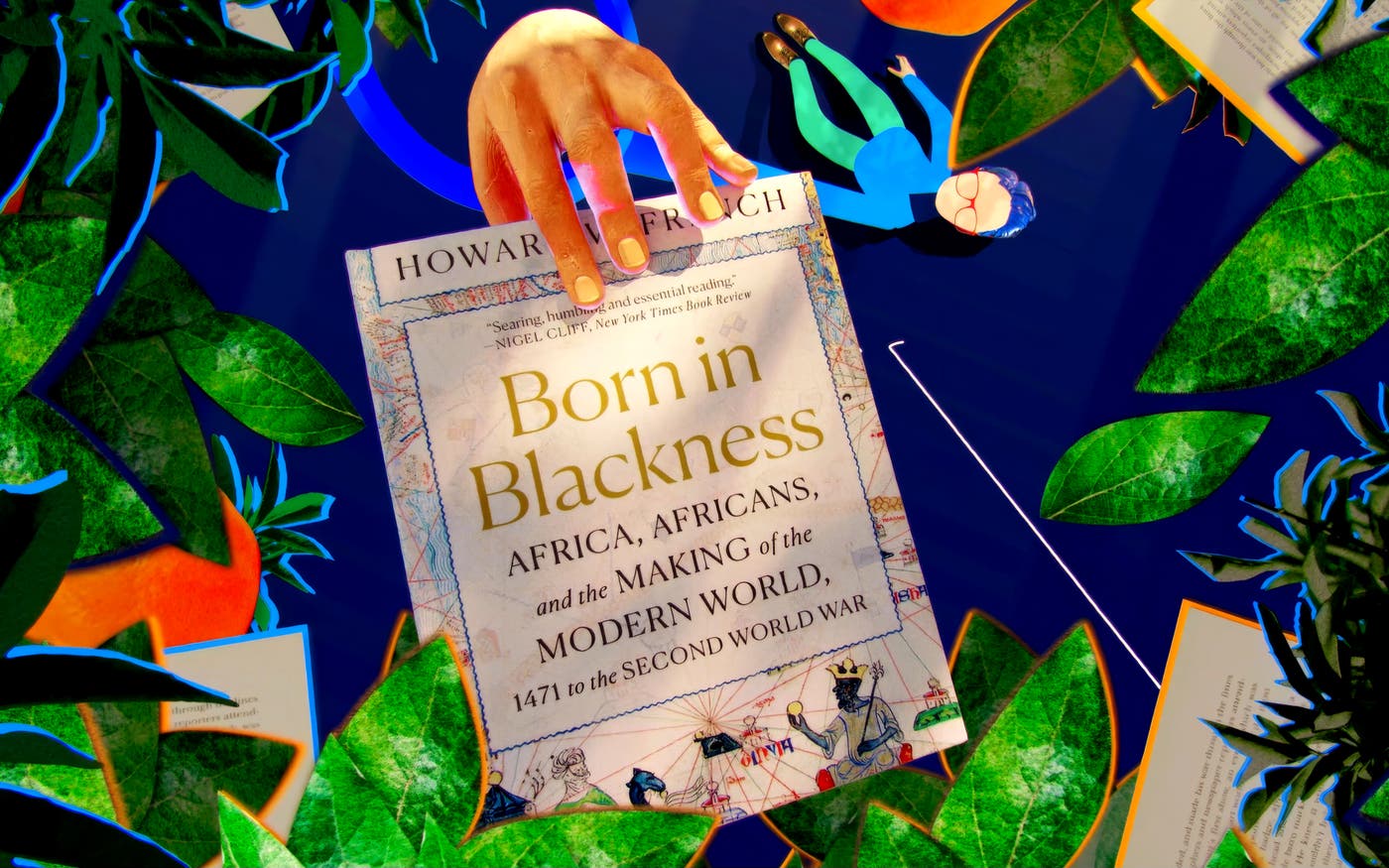
Clear history
This book changed how I see Africa’s past
Born in Blackness challenges Western accounts of the continent.
I’m a student of Africa and its history. Because of all the work our foundation does with partners on the continent, over the years I’ve set out to learn from African experts, read lots of books about it, and studied many countries there while on visits for the foundation. But I now see Africa even more clearly thanks to Howard French’s new book, Born in Blackness. It’s a well written and thoroughly researched book that challenges the standard Western accounts of the continent.
French, whose family comes from Africa, has been a professor in Côte D’Ivoire and the United States, and an Africa correspondent for The New York Times. He gives readers a new perspective on the African continent as well as a new perspective on this continent.
French takes a hard look at the idea that Europe’s “Age of Discovery” was the natural outgrowth of its wealth, power, and technological achievements. In fact, he argues, at the dawn of the 16th century the warring and fractious nations of Europe were less powerful and innovative than other regions. The continent produced little of value to potential trading partners. Its voyages of discovery would not even have been possible without the profits that Europe’s royals earned from African gold.
He writes: “The gigantic boost that [this gold] provided the [Portuguese] crown … made it possible for Lisbon to keep pace with Spain in their headlong course into ocean faring, discovery, conquest, crusading, and intercontinental trade.”
Another idea he sets out to correct is that Africa was stateless and primitive before the Europeans arrived. In reality, he explains, various African kingdoms had established city-states that rivaled Europe’s in terms of political organization, military power, commerce, art, and exploration.
And at least one such kingdom, in present-day Mali, had much more wealth than any royal family in Europe. When the Malian Emperor Mansa Musa and his 60,000-person entourage crossed the African continent in 1342, they brought as much as 18 tons of pure gold along to use in trade and as gifts. Unfortunately, reports of Musa’s wealth eventually arrived in European capitals, which helped trigger Europeans’ pursuit of Africa’s riches.
French also argues against the idea that labor by enslaved people from Africa made only a marginal contribution to the rise of the West. For example, he writes, “The value derived from the trade and ownership of slaves in America alone [was] greater than that of all of the country’s factories, railroads, and canals combined.” And more generally: “Without Africa, and the slave plantation agriculture of the Caribbean that derived from it, there would never have been the kind of explosion of wealth that the West enjoyed … nor such early or rapid industrialization.”
It's a sign of a good book when you finish it wanting to know more about one of its topics, and that was certainly true for me with Born in Blackness. I’m trying to learn more about how the value of goods like sugar and cotton has changed over time—French quotes some sources that say profits on these goods remained high throughout much of the history he covers, but it seems like competition should have driven profits down, since both crops grow in a lot of places.
But that’s a rabbit hole I’m happy to go down. It’s a compliment, not a criticism, that French left me more curious. If you’re interested in learning more about the history of Africa, its central role in the world, and the ways in which both have been misunderstood in the West, I highly recommend Born in Blackness.
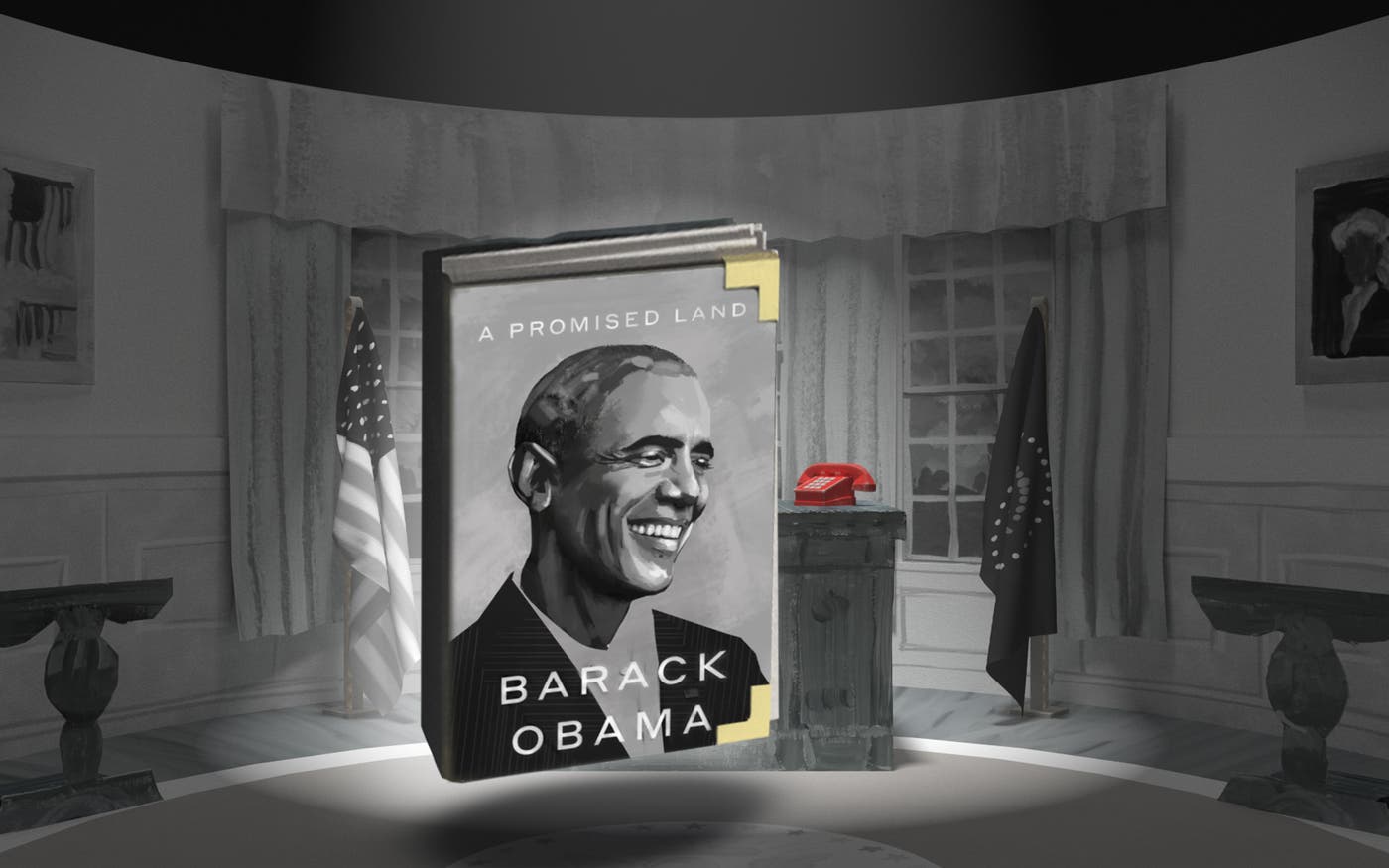
Hail to the chief
A refreshingly honest take on the American presidency
President Obama’s memoir is a terrific read, no matter what your politics are.
I’m a big fan of presidential memoirs, but they tend to follow the same script. The author usually touts things that went well or repeats talking points you’ve heard from them before. I think the best writing about presidents is often done by a third party, because they’re able to be more objective. (The Bully Pulpit and Presidents of War are some of the best books I’ve read.)
You have to be a pretty self-aware person to write a candid autobiography—something that politicians aren’t exactly known for. Fortunately, President Obama isn’t like most politicians. A Promised Land is a refreshingly honest book. He isn’t trying to sell himself to you or claim he didn’t make mistakes. It’s a terrific read, no matter what your politics are.
The book covers Obama’s life up through the operation that killed Osama bin Laden in 2011. I found the parts about his early career to be particularly interesting. He does an excellent job describing how challenging he found politics, especially when he was just starting out. I liked him before I read the book but even more after reading it.
Most people think of Obama as a natural politician because he’s so good at public speaking. But he didn’t enjoy campaigning the way Bill Clinton did, and he preferred sitting in policy briefings to shaking hands and kissing babies. He was especially uncomfortable with the adoration that he got in 2008, writing that he had to “constantly take stock to make sure I wasn’t buying into the hype and remind myself of the distance between the airbrushed image and the flawed, often uncertain person I was.”
I wish more politicians could write like Obama. A Promised Land almost reads like a novel, because he’s so good at connecting each individual event into one big narrative. The book—which is the first of a planned two volumes—covers some of his biggest accomplishments, including the 2009 stimulus package and the Affordable Care Act. Even though you already know that both of those bills become law, his honest assessments turn them into compelling stories that keep you on the edge of your seat.
Obama has a very lawyerly approach to thinking and writing about policy, which I like. He talks at length about how his staff would get frustrated by his need to understand all of the facts and every side of the argument. I loved how he describes seeking out different points of view and how they influenced the choices he made. The chapter about his disagreements with the generals over his decision to withdraw from Iraq is fascinating (and is especially interesting in light of President Biden’s decision to withdraw troops from Afghanistan later this year).
The book captures how complex the job of running the country is. You’re constantly shifting gears, even more than a CEO does. As president, your day is all about making monumental decisions that affect many people’s lives and livelihoods, and you have to focus on many problems at once. Obama says he found it difficult to stay focused and not get pulled into different crises all the time. Toward the end of the book, he recalls flying to Alabama to survey the damage from a deadly tornado right after giving the green light for the bin Laden raid. I was impressed by his ability to approach such radically different situations with equal attention and care.
Obama makes it clear the positives of the job—especially the opportunity to make lives better—outweigh the negatives. But overall, the memoir left me with a surprisingly melancholy impression of what it’s like to be the president. “Sometimes I’d fantasize about walking out the east door and down the driveway, past the guardhouse and wrought-iron gates, to lose myself in crowded streets and reenter the life I’d once known,” he writes.
A Promised Land is ultimately a story about how the presidency defines the lives of those wrapped up in it. “For all its power and pomp,” Obama says, “the presidency is still just a job and our federal government is a human enterprise like any other.” I can’t wait to get another peek behind the curtain when the second book comes out.

Life during wartime
How Brits survived the Blitzkrieg
Erik Larson’s The Splendid and the Vile is a page-turner about getting through World War II.
Erik Larson’s The Splendid and the Vile has nothing to do with viruses or pandemics. But it is surprisingly relevant for these times.
The Splendid and the Vile is a brilliant account of another era of widespread anxiety: the years 1940 and 1941, when English citizens spent almost every night in makeshift shelters as massive bombs rained down on them. This German Blitzkrieg killed 44,652 Brits—almost 6,000 of them children—and seriously injured another 28,556.
But numbers don’t tell the story, and that’s why Larson works with small, intimate details. “I set out to hunt for the stories that often get left out of the massive biographies of Churchill, either because there’s no time to tell them or because they seem too frivolous,” Larson explains in the acknowledgments. The result is the kind of page-turner you always want in a history book but rarely get. I haven’t read any of Larson’s seven other books, but now I’m curious to read more of his work.
The most fascinating of Larson’s details come from contemporaneous accounts in private journals, including those of regular citizens as well as people close to Winston Churchill and Adolf Hitler. By weaving these details into one fast-paced narrative, Larson helps the reader feel what it’s like to live under aerial attack, which was very different from what I had imagined.
As the book’s title suggests, that time in British history was one of stark contrasts. At night, air-raid sirens would go off and the bombs would begin to fall with “an appalling shriek like a train whistle growing nearer and nearer, and then a sickening crash reverberating through the earth,” according to the journal of a London teacher. No one was safe from these nightly raids. In addition to trying to create as much panic as possible, Hitler and his bomber pilots targeted the king, queen, prime minister, and their families—and just barely missed them on several occasions.
And yet life would go back to something approaching normal the next morning. People literally and figuratively dusted themselves off and shuffled off to work, shopping, and play. “The shops of Piccadilly and Oxford Street still teemed with customers, and Hyde Park still filled with sunbathers, more or less confident that German bombers would not pass overhead until after dusk,” Larson writes.
Larson argues that Churchill’s leadership was probably the number-one reason the British people persevered. Before he became prime minister, the eccentric and crass Churchill had many powerful detractors, including the king who appointed him (George VI) and U.S. Ambassador to the United Kingdom Joseph Kennedy. But it soon became clear to nearly everyone that Churchill was ready to rally a weakened country that was at risk of getting slaughtered by Hitler’s forces.
One of Churchill’s gifts was his ability to move people through words. He gave his fellow Brits a mix of brutal honesty and credible hope. Speeches likes his famous “blood, toil, tears, and sweat” speech helped the British people see themselves as “protagonists on a vaster scene and as champions of a high and invincible cause, for which the stars in their courses were fighting,” in the words of one of Churchill’s private secretaries.
Another of Churchill’s gifts was his bandwidth. He worked around the clock, overseeing almost all the details of the war effort—including hiring a talented team that could cut through bureaucracy, developing new technologies for neutralizing Nazi advantages, and persuading America to join the war. Larson gives the reader a “you are there” sense of the intensity of Churchill’s work with his team on life-and-death challenges—and solving them at a pace I found to be mind-blowing.
Another leadership quality was his fearlessness. In fact, he drove his security officer crazy by constantly putting himself in harm’s way. “Fires still burned and crews were still digging bodies from wrecked buildings when Churchill arrived in the East End,” Larson writes. Churchill spent hours with the East Enders, listening to their stories and offering reassurance that the Royal Air Force was going to take the fight to Berlin.
For all these reasons, Churchill is the main protagonist of The Splendid and the Vile, but Larson does a great job bringing other fascinating characters to life. He picked a limited number of these supporting characters, so you never get lost or frustrated trying to follow lots of obscure names.
One of my favorites was Max Aitken, better known as Lord Beaverbrook. Churchill put Beaverbrook, whose main claim to fame was owning the largest circulation newspaper in the world, in charge of accelerating the production of fighters and bombers. Beaverbrook was reluctant to take the role, tried to quit numerous times, and earned the disdain of just about every military leader. And yet he had absolutely the right skillset and personal connection to Churchill for getting around the military bureaucracy and scaling up production to levels no one thought possible.
Another flawed but brilliant character was Frederick Lindemann, known to most as “The Prof” because of his affiliation with Oxford University. Even though The Prof was of German birth and irritated almost everyone around him with his arrogance, Churchill adored him and brought him into his inner circle as chief scientific advisor. The Prof made many mistakes—including persuading Churchill to bomb civilians in Germany—but he was a true genius who made many technological contributions to the war effort.
With these character portraits, Larson shows that Churchill could not have been successful without this team. Churchill was great at certain things. Beaverbrook was great at certain things. The Prof was good at certain things. Great Britain was very lucky to have their combined talents.
The book would have benefitted from a few diagrams showing the shipping losses and where the German bombs were falling. Some of the details on Germany’s radio beacon technology are a little murky, and by the end I didn’t really understand how the British managed to block it. But these are minor complaints.
Because this book focuses on what one country and its people experienced during one year of World War II, it shouldn’t be the only book you read on the war. But it’s outstanding—and far more relevant for our times than Larson could have imagined when he was researching it.
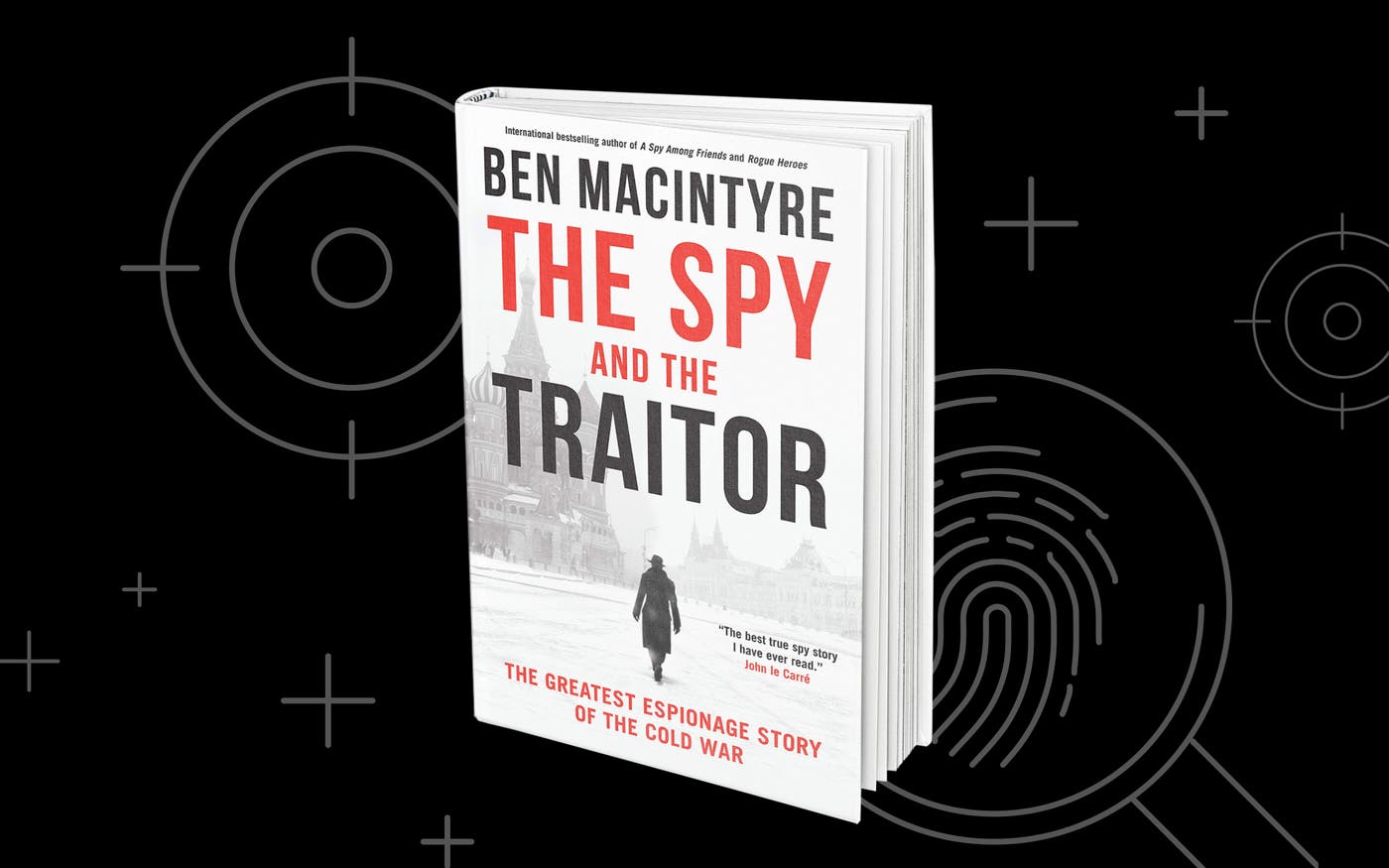
Spy vs Spy
An amazing real-life espionage thriller
In The Spy and the Traitor, a Soviet double agent helps prevent a nuclear war—and nearly dies for it.
This year has been brutal on so many levels. But 1983 could have been far worse.
In the first half of that year, President Ronald Reagan dramatically ratcheted up rhetoric, military spending, and psychological operations against the Soviets. And then in November, NATO conducted a massive military simulation involving 40,000 troops. The Soviets, convinced that NATO was getting ready for a surprise nuclear attack, prepared for nuclear war.
But then, without explanation, the West pulled back from the brink. And now we know why: A double agent embedded high in the KGB’s outpost in London got word to his British handlers that the Soviets had mistaken NATO’s war games as war preparation. Without disclosing the source of the intelligence, British Prime Minister Margaret Thatcher was able to convince Reagan to soften his tone and halt further escalation.
I learned about this episode from British journalist Ben Macintyre’s newest book, The Spy and the Traitor. The book focuses on Oleg Gordievsky, the double agent who helped prevent nuclear war, and Aldrich Ames, the American turncoat who likely betrayed him. Macintyre’s dramatic retelling of their stories comes not only from Western sources (including Gordievsky himself, who is now 82 and living under witness protection in the UK) but also from the Russian perspective. The book is every bit as exciting as my favorite spy novels.
You may be wondering why Macintyre applies the label “spy” to the double agent Gordievsky while applying “traitor” to the double agent Ames. Is it just a Western bias? Actually, no. Macintyre makes it clear the two men could not have been more different.
Gordievsky was raised from birth to be a top KGB spy. His father, Anton, was a devoted Communist Party member and KGB agent who took part in Stalin’s paranoid purges of “enemies of the state.” As a result of his father’s position in the KGB, Gordievsky grew up “well fed, privileged, and secure” in a Moscow apartment block “reserved for the intelligence elite,” according to Macintyre.
Gordievsky was bright, athletic, and adept at learning foreign languages, all of which helped him get into the prestigious Moscow State Institute of International Relations, sometimes called “the Russian Harvard.” Even before graduation, he was recruited into the KGB and began his rise up the hierarchy.
But something snapped inside Gordievsky when the Soviet Union invaded Czechoslovakia, in 1968. “This brutal attack on innocent people made me hate [my own country],” he later wrote. “My soul was aching.” He began to question all the Soviet dogma that he had been learning since birth.
Five years later, an undercover officer in MI6—Britain’s equivalent of the CIA—named Richard Bromhead met Gordievsky at an art exhibit in Copenhagen. Bromhead knew that Gordievsky was a KGB agent but knew nothing of his growing antipathy toward the Soviet Union. But somehow he sensed a recruitment opportunity. Using sophisticated spycraft I enjoyed learning about, Bromhead spent the next year probing Gordievsky’s loyalties. Finally, over drinks in an elegant hotel, Bromhead made his ask, and Gordievsky crossed over.
Gordievsky became MI6’s most valuable agent within the KGB, providing a torrent of useful intelligence at incredible risk to himself—not to mention his wife and two daughters, who knew nothing of his life as an informant. He knew that the KGB had eyes and ears everywhere—and that if he were even suspected of collaborating with the West, he would be tortured and then executed.
Aldrich Ames, in contrast, was an insecure man who betrayed his country purely for money. While working for the CIA, he was a hard drinker, grumbled frequently about feeling unappreciated, racked up big debts, got divorced, and then immediately got remarried to a woman with a love of Jaguars and Nieman Marcus. The CIA somehow missed these red flags for almost a decade.
In 1985, two years after Gordievsky helped pull the world back from the precipice of war, Ames met his KGB handlers at a restaurant in Washington, D.C., and handed them seven pounds of documents. In what became known as “the big dump,” Ames unmasked at least 25 spies, and many believe that Gordievsky was among them. “Ames knew he was issuing a death warrant for every person he named, but that, he reasoned, was the only way to ensure that he would be safe, and rich,” Macintyre writes.
One of my favorite parts of the book is the section in which Gordievsky narrowly escapes capture by fleeing across the Finnish border. By the time we get to that part, we already know that he survives. But it’s thrilling anyway. Macintyre, who has a keen eye for detail, does a great job narrating the escape scene and all the ways it almost fails. I won’t give away any of those details here.
Another memorable part of the book is Macintyre’s deep dive into the paranoia and corruption of the Cold War KGB. It felt relevant and interesting not just as a historical study but also for understanding the professional culture in which Vladimir Putin was raised. For example, Putin’s 2016 election interference comes straight out of the “active measures” playbook the KGB deployed against Margaret Thatcher in 1983.
Given the pure cost (in dollars and lives) of running intelligence operations, it can be tempting to wonder whether the benefits are worth it. But the Gordievsky case shows that the payoff can be enormous—maybe even world saving. I’m glad I read this remarkable profile in courage.
Warts and all
American history in full color
An eye-opening history of the United States.
Over the years, I’ve read a lot of books about history, especially American history. I never get tired of looking closely at seminal events, such as the Vietnam War, and figures I admire, such as the global heath hero Jim Grant.
These Truths: A History of the United States, by the Harvard historian and New Yorker contributor Jill Lepore, is not a deep or comprehensive account of individual events or people. The book covers centuries of history in its 800 pages, so Lepore can offer only quick glimpses at major events such as America’s first presidential impeachment (only three sentences) and doesn’t even get a chance to mention pivotal figures such as Lewis and Clark.
But with the exception of a brief section covering the past 20 years (more on this below), I loved the book and hope lots of people read it. In keeping with its title, it’s the most honest account of the American story I’ve ever read, and one of the most beautifully written. Lepore comments in her conclusion that simplistic, feel-good accounts of our past undermine and belittle “the American experiment, making it … a daffy, reassuring bedtime story.” These Truths is just the opposite.
While many good history books provide perspectives beyond those of the traditional “great men” of history, Lepore’s book makes diverse points of view central to the narrative. She shows you all the ironies and contradictions in American history.
For example, Lepore tells you about Margaret Chase Smith, the first woman to serve in both houses of Congress. Smith had the courage to stand up to abuses in Congress; she was particularly passionate in speaking out against Joseph McCarthy’s hateful hunt for communists in government. And yet she also willingly participated in crusades against “homosexuals and other sex perverts in government,” in the language of the Congressional hearings.
Another contradiction I was not aware of relates to the GI Bill, which gave a huge boost to my dad’s education and career after he served during World War II. After acknowledging that the GI Bill was one of the wisest investments our country has ever made, she points out that it actually had a negative impact on African Americans, women, and gay people who fought for their country in World War II—most of whom were denied GI benefits.
By far the biggest contradiction in our country’s history is one that Lepore weaves into every part of her book: the fact that America was founded on assertions of liberty and sovereignty while practicing African slavery and Native American conquest.
This contradiction was obvious to America’s slaves, many of whom sided with the British during the American Revolution because they knew they had a much better chance of being freed if the British won. One of George Washington’s own slaves, Harry Washington, escaped from Mount Vernon during the war and fought alongside Lord Dunmore, the royal governor of Virginia. Harry Washington later fled to Sierra Leone and became the leader of a group of revolutionaries who declared independence there.
The Emancipation Proclamation represented an important step in reconciling this contradiction. “American slavery …. had stolen the lives of millions and crushed the souls of millions more,” writes Lepore. “It had poisoned a people and a nation…. It was not over yet. But at last, an end lay within sight.” Thirty years after Lincoln’s proclamation, Frederick Douglass wrote, “The problem is whether the American people have loyalty enough, honor enough, patriotism enough, to live up to their own Constitution.”
Despite all of Lepore’s research and writing, I found the final section of the book to be out of keeping with what preceded it. This section did not sound like it was written by a professor who excels at detached historical analysis. Especially in the section about the 2008 financial crisis, it reads like the work of a critic who is caught up in the passions of the moment.
Even so, I highly recommend the book. It’s packed with amazing details I had never read before. For example, there were more than 100 incidents of violence between members of Congress between 1830 and 1860. But more important, it’s a good reminder that there’s a lot more to American history than most of us learn in school. These truths are ones we all need to hear.

Battle tested
What wars tell you about U.S. presidents
Michael Beschloss’s latest book gave me insights about leadership.
If I had been just a year or two older, I might have been called to serve in the Vietnam War. I think that’s one reason why I’m so interested in books and movies about the war. I always come back to the same question: If I had fought in the war, would I have showed courage under fire? Like many people who have not served, I have my doubts.
In addition to thinking about those who fought and died in the war, I have also spent a lot of time learning about those who directed the war. My interest in all aspects of the war is the main reason I decided to pick up Michael Beschloss’s newest book, Presidents of War. I’m glad I did. In the chapters that focus on Vietnam, I learned quite a few things about the complex calculations that led the U.S. into and out of Vietnam. (I also learned a surprising piece of trivia: the commander of the U.S. carrier division that was fired on in the Gulf of Tonkin in 1964—in the incident that provided a premise for President Johnson to send the first U.S. ground troops to Vietnam—was the father of Jim Morrison of the Doors.)
But the richest insights for me came from the fact that the book’s broad scope lets you draw important cross-cutting lessons about presidential leadership. Beschloss looks at how presidents have handled each of the nine major conflicts the U.S. entered between the turn of the 19th century and the 1970s: the War of 1812 (James Madison), the Mexican-American War (James Polk), the Civil War (Abraham Lincoln), the Spanish-American War (William McKinley, Theodore Roosevelt), World War I (Woodrow Wilson), World War II (Franklin Roosevelt and Harry Truman), the Korean War (Dwight Eisenhower), and the Vietnam War (Kennedy, Johnson, and Nixon).
Beschloss didn’t unearth much new material about any of these wars. But looking at each president and each conflict with a similar lens is what makes the book a worthwhile read. It is also timely, given that we’re in our 18th year of war in Afghanistan and have troops deployed in many other places around the world.
The first cross-cutting theme is that being Commander in Chief is by far the hardest part of the hardest job in the world. It takes good judgment, moral courage, emotional stability, and curiosity (especially a willingness to learn from previous wars). Based on these criteria, I think we were lucky to have Abraham Lincoln in charge during the Civil War. But Beschloss shows that even Lincoln made significant mistakes and struggled mightily under the strain of war. Lincoln wrote to various friends that he was “wrung by the bitterest anguish,” felt almost ready to “hang” himself, and “I have a strong impression that I shall not live to see the end.”
Similarly, we were lucky to have FDR at the helm during World War II. But Beschloss shows that his moral compass was often on the fritz. I had already known that FDR was responsible for the internment of Japanese-American families and chose not to act to save European Jews even after he was absolutely clear that the Nazis were systematically exterminating them. But I hadn’t realized that FDR engaged in Nixon-like spying on political enemies; his son Elliott later acknowledged that his dad “may have been the originator of the concept of employing the IRS as a weapon of political retribution.” (Eleanor Roosevelt comes across with her reputation fully intact based on her moral and physical courage during the war.)
The second cross-cutting theme is how often our country goes to war based on wounded pride rather than on more sober considerations. In almost every case, a large majority of Americans don’t want to go to war. But often the tide turns because troops we have put in harm’s way get attacked—or, in the case of the Spanish-American War, simply appear to get attacked—and you get a very predictable honor-driven thing going on. The previous sentiment of “Don’t send our kids off to get killed” shifts very quickly to “We must defend our honor!”
For example, James Polk manipulated that national reflex in the Mexican-American War. Beschloss shows how Polk conspired with a “bombastically aggressive” Naval officer to provoke Mexico into attacking U.S. troops and inflaming the public to demand war. In Beschloss’s words, “Satisfied that his ends would justify his means, James Polk lied and connived, creating a pretext for a war that, despite his public claims, was designed to allow the United States to seize vast territory from Mexico.”
The third cross-cutting theme is that we still don’t have a well-designed system for deciding to go to war, despite nearly 250 years of history. The Constitution says that only Congress has the power to declare war. And yet U.S. presidents have assumed ever greater authority to march our troops into battle—and Congress has largely acquiesced. Congress has issued a formal declaration of war in only five conflicts, and the last time it did so was in 1942.
The final cross-cutting theme is that each of these wars is connected to the ones that came before it. For example, in 1898, the battleship USS Maine blew up in Havana Harbor, killing 266 sailors and igniting the Spanish American War. (The blast was almost certainly a result of a boiler accident rather than a Spanish torpedo.) If that blast had not occurred, the U.S. might not have launched war against Spain. Without the Spanish-American War, the U.S. may not have seized the Philippines and brought Asia into its sphere of influence, or taken Hawaii as its territory, or stationed its Pacific fleet in Pearl Harbor.
It is fascinating and heartbreaking to think about the butterfly effect the Maine explosion had on World War II, Korea, Vietnam, and the Cold War. Beschloss’s book is full of such “what if” moments. It is hard to read about today’s conflicts without thinking about how they might connect to the past and what impact they might have on the future. Presidents of War is worth reading, whether you are one of the nation’s leaders or just an armchair historian.
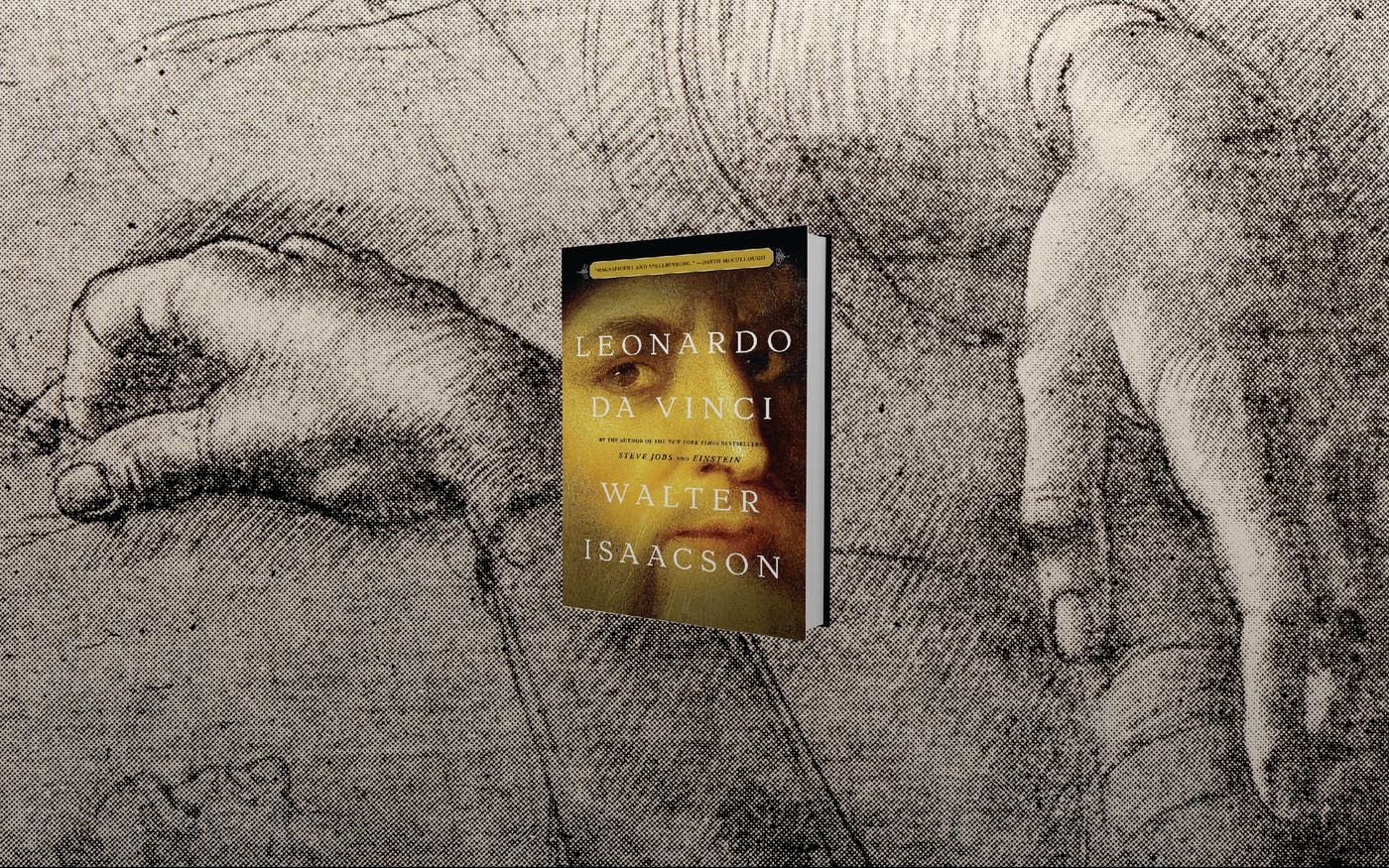
Tinker, painter, sculptor, guy
Leonardo is one of the most fascinating people ever
Walter Isaacson’s terrific new biography sheds light on every facet of the artist’s life.
Shortly after Melinda and I got married, I told her I was bidding on a notebook that could wind up costing a lot of money. “Don’t you already have a great portable computer?” she asked.
I explained that by “notebook,” I meant the old-fashioned kind. And by “old-fashioned,” I meant really old-fashioned, as in more than 500 years old. The notebook in question was one of the 32 surviving journals of Leonardo da Vinci.
After I won the bid, I broke a longstanding tradition. I was supposed to change the name from Codex Hammer (the previous owner was the industrialist Armand Hammer) to Codex Gates, but I thought that sounded silly and I changed the name back to Codex Leicester, the name it held from 1719 until 1980.
The Codex Leicester is not nearly as famous as artworks such as the Mona Lisa and The Last Supper. And Dan Brown fans will be disappointed to know that it doesn’t contain codes protecting age-old secrets. But it’s a scientific treasure. In fact, there are insights, such as one about how blood flows through the heart, that were so far ahead of their time that researchers finally verified them only a few decades ago.
Given my fascination with Leonardo, I was eager to read Leonardo da Vinci, Walter Isaacson’s new biography. I’ve read a lot about Leonardo over the years, but I had never found one book that satisfactorily covered all the different facets of his life and work. Walter—a talented journalist and author I’ve gotten to know over the years—did a great job pulling it all together. If you liked Walter’s major biographies of Steve Jobs and Albert Einstein, you’ll probably appreciate this one.
More than any other Leonardo book I’ve read, this one helps you see him as a complete human being and understand just how special he was. He came close to understanding almost all of what was known on the planet at the time. That’s partly because scientific knowledge was relatively limited back then, partly because he had a high IQ, but mostly because he was insatiably curious about pretty much every area of natural science and the human experience. He studied, in meticulous detail, everything from the flow of water and the rise of smoke to the muscles you use when you smile.
Amazingly, he did it with almost no formal schooling. His father was a notary, a profession that gave him some prominence and prosperity, so Leonardo never had to work in the fields. But because Leonardo was born out of wedlock (his mother was a poor, orphaned peasant girl), he was not sent off to school. That turned out to be a blessing. Leonardo got free time to wander, look at nature, and start creating notebooks full of observations and ideas. He became, in his own words, “a disciple of experience.”
Isaacson also does a great job of explaining why Leonardo’s work is so revered. Unless you’re an art historian, you might even wonder if paintings like the Mona Lisa are famous just for being famous. But Walter shows how Leonardo’s genius is in the details. “He became fascinated about how a smile begins to form and instructed himself to analyze every possible movement of each part of the face and determine the origin of every nerve that controls each facial muscle,” he writes. “Tracing which of those nerves are cranial and which are spinal may not have been necessary for painting a smile, but Leonardo needed to know.”
Despite his remarkable artistic talent, Leonardo barely thought of himself as a painter. When he was about 30 years old, he applied for a job with the ruler of Milan. After listing interests from military engineering to science to designing sets for plays, he included almost as an afterthought, “I can also paint.”
There was one downside to having such broad interests: He often switched his focus to new domains right in the middle of a project, leaving works unfinished. Here’s a classic example: After Leonardo won a coveted commission to create a large statue of a nobleman perched on a horse, Leonardo procrastinated by going down multiple rabbit roles. For example, he dissected horses to understand their anatomy, created new systems for feeding horses, and designed cleaner stables. He never completed the statue, and he never published the treatise on horses he started.
When you look across all of Leonardo’s many abilities and his few failings, the attribute that stands out above all else was his sense of wonder and curiosity. When he wanted to understand something—whether it was the flow of blood through the heart or the shape of a woodpecker’s tongue—he would observe it closely, scribble down his thoughts, and then try to figure it all out.
It’s a bit of a lost art these days—even though, in the age of free Wikipedia entries and YouTube videos, it’s easier than ever to satisfy your curiosity. It’s ironic that we can be reminded about the wonders of modern life by a man who lived 500 years ago.
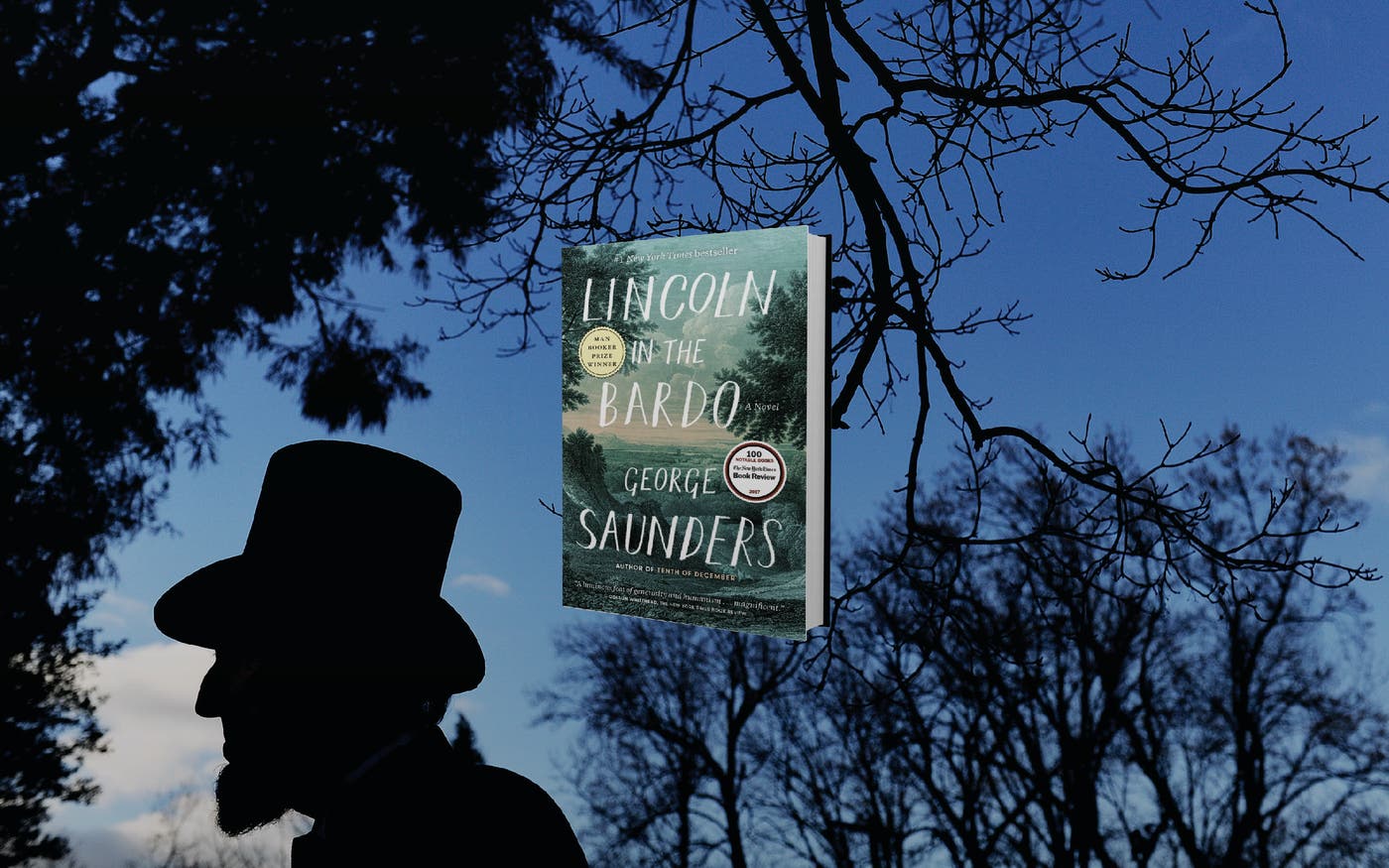
Measures of devotion
An all-American ghost story
Lincoln in the Bardo gave me a new perspective on America’s 16th president.
I find anything related to Abraham Lincoln super interesting. His personal story—of someone from humble beginnings who successfully navigated the political world without compromising his beliefs—is fascinating. I’ve read a lot about him over the years and thought I knew pretty much everything there was to know. But I recently read a book about Lincoln that surprised me.
Lincoln in the Bardo by George Saunders gave me a new perspective on America’s 16th president. Despite being a work of fiction, it offered fresh insight that made me rethink parts of his life. The novel takes place over the course of one night not long after the death of Willie, Lincoln’s beloved 11-year-old son. The “bardo” in the title refers to a purgatory-like place where spirits linger after death—in this case, a spectral version of the Washington, DC cemetery where Willie was buried.
It’s dangerous for children to linger in the bardo (for reasons that are never explained), but Willie refuses to leave after his father visits his grave. Most of the book focuses on the other spirits trying to convince Willie to depart. There are 166 spirits in total, and Saunders uses a script format to make it clear who is speaking when. It’s disorientating at first, but you get the hang of it pretty quickly.
Saunders also uses excerpts from historical texts to tell the story of Willie’s death and its aftermath. I loved how he uses these flashbacks to show how fuzzy our recollections of the past can be. In one chapter, he weaves together conflicting quotes about Lincoln’s appearance. Were his eyes gray, or were they green? The answer changes depending on who you ask. It reminded me of the musical Hamilton, which deals with similar ideas about how storytellers shape history.
Saunders blends history and fiction seamlessly throughout the book. Some of the snippets in the flashbacks come from real sources (like Doris Kearns Goodwin’s Team of Rivals), and others are made up. The same is true of the ghosts: some are based on real people, but most are fictional. Lincoln really did visit Willie’s grave, although scholars disagree about whether he opened the coffin as he does in the book.
Saunders’ Lincoln is a man crushed by the weight of both grief and responsibility. Although his early life had its own share of tragedy, he’s now experienced the greatest heartbreak a parent can have. “The essential thing (that which was borne, that which we loved) is gone,” he thinks as he looks down at Willie’s coffin toward the end of the book.
Losing a child is unbearable for any parent, but Lincoln is also burdened by timing. Willie died less than a year after the Civil War started. The president has a new understanding of the grief he’s creating in other families by sending their sons off to die in battle. He must make a choice. Should the war go on? If it does, how can we ensure the end result justifies the cost of such suffering?
As far as I know, there’s no evidence linking Lincoln’s decision-making in the war to his son’s death—but Saunders cleverly makes the connection. Although the Gettysburg Address isn’t mentioned in the book, the results of Lincoln’s choice are echoed in some of its most famous lines: “From these honored dead we take increased devotion to that cause for which they gave the last full measure of devotion—that we here highly resolve that these dead shall not have died in vain.”
More than once while reading Lincoln in the Bardo, I found myself wanting to discuss it with someone else. A tennis buddy recommended the book to me, and I couldn’t wait to get back on the court and talk to him after I finished. Many parts of the book are intentionally mysterious. The study guide at the end is helpful, but I think it’s more fun to hear what other people think.
Lincoln in the Bardo is heavy stuff for a summer book, but I’m really glad I picked it up. It’s a quick read thanks to its play-like format, and some of the ghosts’ stories are surprisingly funny given the subject matter. If you’re an Abraham Lincoln buff like me, you won’t regret taking this one on your next vacation.
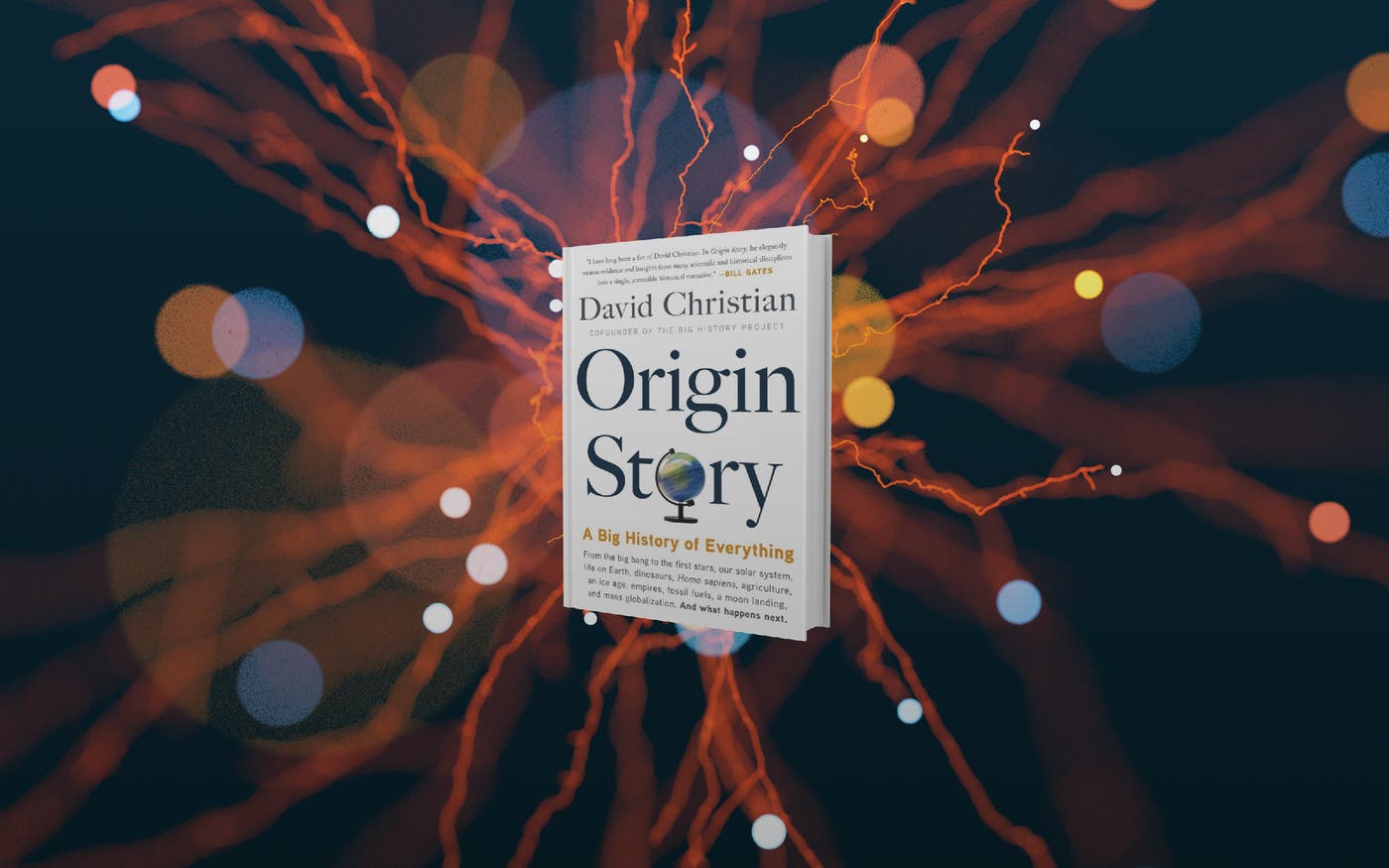
Big bang theory
Lifelong learners will appreciate this book about the history of everything
What is humanity’s origin story? David Christian answers that question in his new book.
We all have an origin story. In some societies, they manifest as creation myths. In others, they look more like history textbooks. For example, as a kid in the United States, I grew up learning about the group of rebels who stood up to their British overlords and founded our country. It’s human nature to be curious about where we come from, and origin stories unite people through a common history and shared sense of purpose.
But what if all of humanity shared an origin story? What would that story look like? Historian David Christian tries to answer those questions in his new book Origin Story.
As the creator of Big History—my favorite course of all time—David is well-suited to write about how we came to be. Big History tells the story of the universe from the big bang to the first signs of life to today’s complex societies. It shows how everything is connected to everything else, weaving together insights and evidence from across disciplines into a single, understandable narrative.
Origin Story is essentially the Big History course condensed into a short book. It divides 13.8 billion years of existence into what David calls “thresholds”—moments in history that mark key transition points, like the formation of our solar system and the first appearance of early humans. The chapters about the early thresholds are heavy on physics and chemistry, but it skews more towards biology and anthropology as single cell life evolves into more complex beings.
If you haven’t taken Big History, Origin Story introduces you to its concepts in a straightforward, understandable way. David is a very good writer, and he has a way of making complicated subjects fun. If you’re already a Big Historian, is a great refresher. It does a fantastic job distilling the latest thinking about the origins of the universe. I learned some things that are simply too new to be included in the course.
The book ends with a chapter on where humanity—and the universe—is headed. David is more pessimistic about the future than I am. He gets a little stuck on the current economic and political malaise happening in the West, and I wish he talked more about the role innovation will play in preventing the worst effects of climate change. But he nails the importance of this moment in history: “Things are happening so fast that, like the slow-motion time of a near accident, the details of what we do in the next few decades will have huge consequences for us and for the biosphere on scales of thousands of years. Like it or not, we are now managing an entire biosphere, and we can do it well or badly.”
Understanding where humanity comes from is crucial to shaping where we go next. Origin Story is an up-to-date history of everything that will leave you with a greater appreciation of our place in the universe.
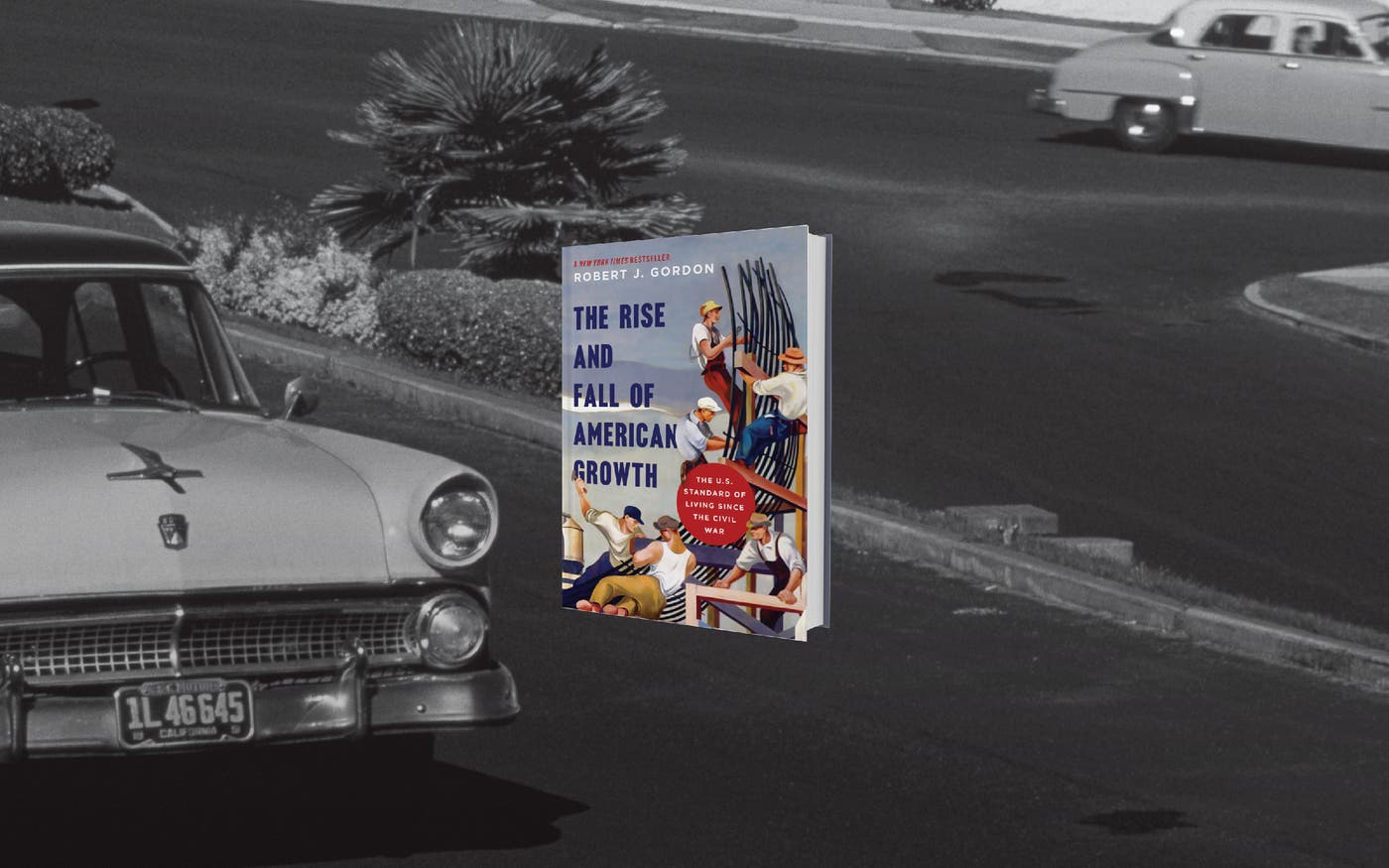
Rise? Sure. Fall? Nope.
America’s best days are not behind us
They’re not behind us.
I generally read books that I expect to enjoy. But based on reviews I had seen, I was prepared to be more frustrated than fascinated by Robert Gordon’s new book, The Rise and Fall of American Growth. So you can imagine my surprise when I discovered how much I liked it.
Most reviews have focused on the “fall” indicated in the title: the last hundred pages or so, in which Gordon predicts that the future won’t live up to the past in terms of economic growth. I strongly disagree with him on that point, as I discuss below. But I did find his historical analysis, which makes up the bulk of the book, utterly fascinating. (And, at 743 pages, the book has a lot of bulk. Gordon’s two-part piece in Bloomberg View is a helpful summary for anyone who won’t get through the whole thing.)
Gordon paints a vivid picture of the years between 1870 and 1970, a century of unprecedented growth in the United States. This was the century that brought us the great inventions that fundamentally changed our standard of living—inventions like the electrical grid, indoor plumbing, automobiles, and antibiotics.
Gordon does a phenomenal job illustrating just how different life was in 1870 than it was in 1970, through both an economic analysis and engaging narrative descriptions.
Consider that in 1870, most homes were lit by candles and whale oil lamps. To use the bathroom, your choice was an outhouse or a chamber pot. Your world was confined to the distance your horse could travel. You would spend long hours of your short life doing backbreaking labor, owning only two changes of clothes, and eating a whole lot of pork and grain mush.
By 1970, homes—and people—became, to use Gordon’s term, networked. The advent of electricity, cars, indoor plumbing, and telephones meant that people were more connected than ever, dramatically improving quality of life and increasing productivity to previously unseen levels.
What really amazed me was not the speed of innovation but the speed of adoption. In 1910, there were 2.3 motor vehicle registrations for every 100 households. By 1930, there were eighty-nine.
In its impact on the standard of living, the arrival of the automobile was rivaled only by the commercialization of electricity. It’s hard for many of us to imagine living in the dim, smelly, and smoky dwellings of 1870, washing clothes by hand, heating irons on a gas or wood stove, and eating only food that didn’t require refrigeration. By 1970, you could walk into most houses and see a refrigerator, an iron, a washing machine. It would look pretty much the same as any house you’d walk into today, with a couple notable exceptions like the microwave (and color schemes with a lot less harvest gold).
I found Gordon’s historical analysis eye-opening. And that’s why I think the attention that reviewers have paid to his predictions for the future, which make up only two chapters, distracts from the impact of the book.
Gordon argues that American growth can never be what it was between 1870 and 1970 because the fruits of the digital revolution will not live up to the legacy of the great inventions that transformed life in the 19thth and 20 centuries.
I couldn’t disagree more.
Gordon’s premise is that what he calls the third industrial revolution, the one driven by computers and digitalization, is limited to communication, information, and entertainment. I believe it’s far broader than that.
The digital revolution affects the very mechanism of the marketplace. How buyers and sellers find each other, how we amass information, how we can create models to simulate things before building them, how scientists collaborate across continents, how we learn new things—all of this has changed dramatically thanks to digital innovation. Yes, household appliances look pretty much the same now as they did in 1970, but that doesn’t mean our lives in 2070 won’t be profoundly different.
As Gordon acknowledges many times, we don’t have a good tool for measuring the impact of innovation on people’s lives. Like other economists, Gordon uses something called Total Factor Productivity (TFP), which is meant to capture efficiency due to innovation. TFP is based on GDP but takes into account the hours we work and the equipment we use.
The truth is, while economic measurements like TFP can be useful for understanding the impact of a tractor or a refrigerator, they are much less useful for understanding the impact of Wikipedia or Airbnb.
How do you calculate the value of millions of pages of free information at your fingertips? How do you calculate the impact of the entire hospitality industry flipped on its head? In the future, GDP may not grow as fast as it did in the past—or, for all we know, it may—but that alone doesn’t tell you whether people’s lives are going to get better.
Implicit in Gordon’s analysis is that nearly all the big problems have been solved, and any improvements over the coming decades will be at the margins. Gordon’s refrain, referring to automobiles and refrigerators and telephone systems, is “These achievements could happen only once.” This is true—but it’s true for things in the future, too. By Gordon’s definition, a robot that’s better at seeing and manipulating things than humans will only happen once. A cure for Alzheimer’s will only happen once.
And when they do happen, the change in our standard of living will be anything but marginal. Think of a cure for Alzheimer’s. That disease costs the U.S. $236 billion per year, mostly to Medicare and Medicaid. A cure would immediately alter the budget of every state in the country, not to mention millions of lives.
In the final chapter of the book, Gordon mentions “headwinds” that he predicts will further hamper U.S. growth and progress in the coming decades, including inequality, a broken education system, an aging population, and government debt.
I certainly agree that these are big problems. Reducing inequality and making sure every child in the country is ready for college and the workforce has been a major focus of our foundation’s U.S. Program. But America had problems with inequality and education in the past, and they didn’t prevent great inventions from having a big impact. Moreover, I’m optimistic that some of the great inventions of the future will be considered great because of their success at addressing these problems directly.
And I should add that Gordon limits his scope, understandably, to the U.S. But you can’t read his book without thinking about the billions of people around the world for whom a quality of life equal to the America of 1970 would be a vast improvement.
Learning about the speed at which the U.S. was able to spread innovations—from sanitation to electricity—makes me more hopeful about what is possible for the world rather than less hopeful about what is in store for America.
The book was a fantastic read, and well worth the time. When it comes to choosing a side in the debate between optimism and pessimism, my money is on the incredible forces of technological progress at work every day. Although the book is called The Rise and Fall of American Growth, I am confident that “fall” will not be the final word in America’s story.
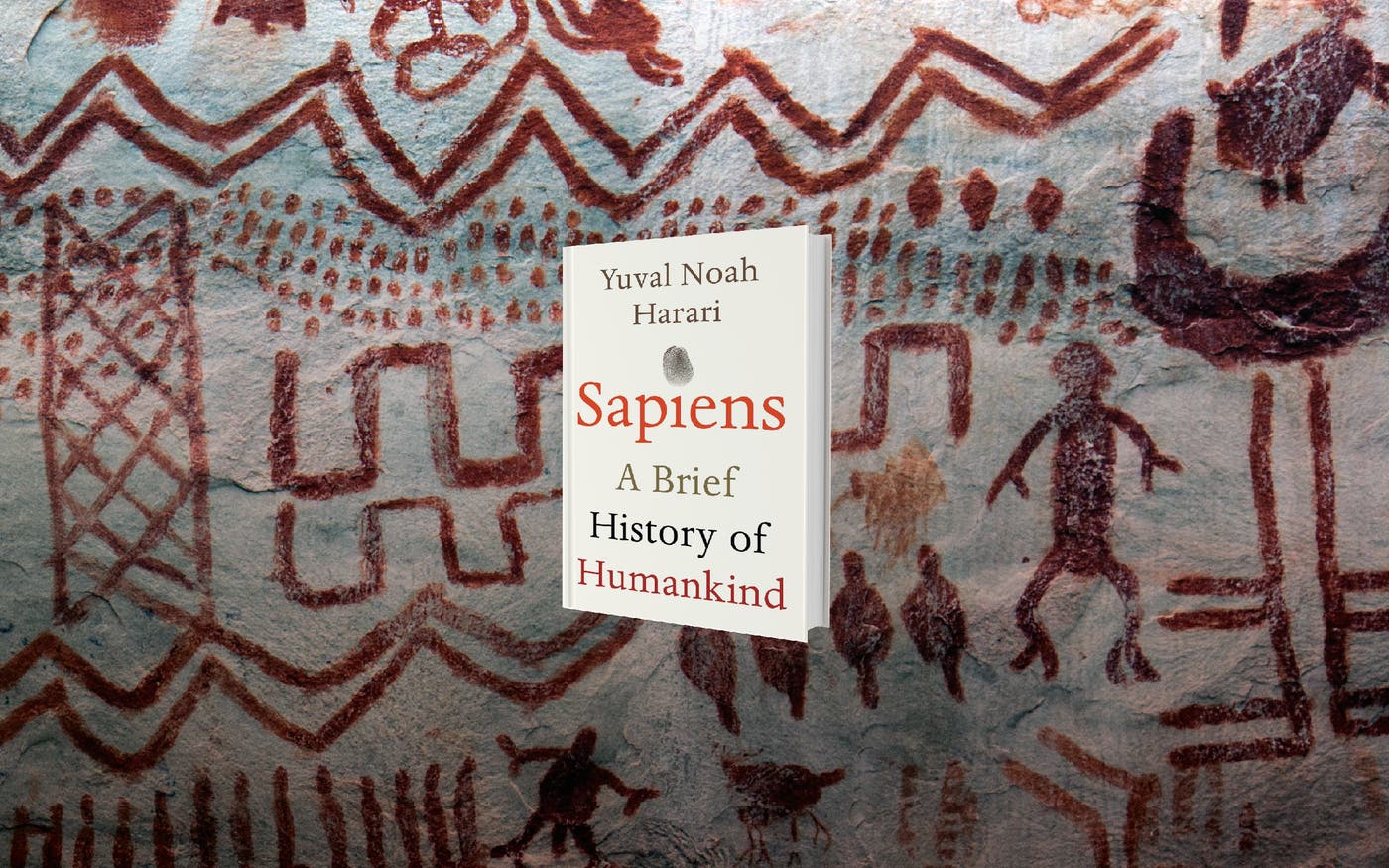
Wise Guys
How did humans get smart?
Melinda and I spent weeks talking about this history of the human race.
When Melinda and I went on our spring vacation, I encouraged her to pack a copy of Yuval Noah Harari’s Sapiens: A Brief History of Humankind. I had just finished the book and I was dying to talk to her about it. It’s so provocative and raises so many questions about human history that I knew it would spark great conversations around the dinner table. It didn’t disappoint. In fact, in the weeks since we’ve been back from our holiday, we still talk about Sapiens.
Harari, who is an Israeli historian, takes on a daunting challenge: to tell the entire history of us, the human race, in a mere 400 pages. I’ve always been a fan of writers who try to connect the dots and make sense of the sweep of history. Probably no one has done it better than David Christian in his Big History lectures, which distill 13.7 billion years of history, from the Big Bang on, into a manageable framework that spans biology, physics, humanities, and the social sciences. While Harari concerns himself with a shorter time frame, the last 70,000 years of human history, his job is no less difficult. He sets out to explain how we, Homo sapiens (Latin for “wise person”), came to dominate the Earth and what may lie ahead for our species.
Most humans assume that we were always the ones in charge, lording over the rest of the animals. But Harari reminds us that long before we built the pyramids, wrote symphonies, or walked on the moon, there was nothing special about us. “The most important thing to know about prehistoric humans,” Harari writes, “is that they were insignificant animals with no more impact on their environment than gorillas, fireflies or jellyfish.”
One hundred thousand years ago, Homo sapiens was just one of a number of different human species, all competing for supremacy. Just as today we see different species of bears or pigs, there were different species of humans. While our own ancestors lived mainly in East Africa, our relatives Homo neanderthalensis, better known as Neanderthals, inhabited Europe. Another species, Homo erectus, populated Asia, and the island of Java was home to Homo soloensis.
Each species adapted to its own environment. Some were big, fearsome hunters, while others were dwarf-like plant gatherers. As different as each species may have been, there is evidence of interbreeding among them. Scientists mapping the Neanderthal genome, for example, discovered that people of European origin today have a small percentage of genes from their Neanderthal ancestors. (That will make an interesting addition to many family trees!)
Today, of course, there is just one human species alive. How did we Homo sapiensHomo sapiens become so successful and others did not? Harari believes it was our unique cognitive abilities that made the difference. About 70,000 years ago, underwent a “cognitive revolution,” Harari writes, which gave them the edge over their rivals to spread from East Africa across the planet.
Other species had big brains too, but what made Homo sapiens so successful is that we are the only animals who are capable of large-scale cooperation. We know how to organize ourselves as nations, companies, and religions, giving us the power to accomplish complex tasks. Harari’s concept of a “cognitive revolution” reminded me of David Christian’s notion in Big History of “collective learning,” how the ability to share, store, and build upon information truly distinguishes us as humans and allowed us to thrive.
What’s unique about Harari’s take is that he focuses on the power of stories and myths to bring people together. Baboons, wolves, and other animals also know how to function as a group, of course, but their groups are defined by close social ties that limit their groups to small numbers. Homo sapiens has the special ability to unite millions of strangers around commons myths. Ideas like freedom, human rights, gods, laws, and capitalism exist in our imaginations, yet they can bind us together and motivate us to cooperate on complex tasks.
As much as I enjoyed Sapiens, there was plenty to disagree with in the book. For example, Harari sets out to prove that the agricultural revolution was one of the biggest mistakes in human history. Yes, it allowed civilizations to thrive, but on an individual level, he writes, we were much better off as hunter-gatherers. As farmers, people had to work a lot harder and in exchange they had a worse diet than they had as foragers. Agricultural societies also created social hierarchies in which the majority toiled as peasants and a minority of elites ruled over them.
That’s certainly a provocative argument, but I wasn’t convinced. First, arguing that we were happier as hunter-gatherers than as farmers creates a choice when there isn’t one. It’s not as if we can turn back the clock and restart as hunter-gatherers or we can run an experiment to prove one way of life is better than the other. Second, I think Harari underestimates the hardships of being a hunter-gatherer. He suggests that death and violence rates were much lower in hunter-gatherer societies than after the agricultural revolution. But it’s more likely the violence was higher because of competition over resources. A farming society can support many more people per square mile than a hunter-gathering society. In order to keep population densities low, conflict was inevitable among groups of hunter- gatherers. Finally, calling the shift to agriculture a “mistake” overlooks the fact that farming societies were able to specialize, leading to written languages, new technologies, and art—all things we value today.
Still, I would recommend this book to anyone interested in a fun, engaging look at early human history. Like Big History, it left me with an overarching historical structure which I can build on as I learn more. At the same time, Harari tells our history in such an approachable way that you’ll have a hard time putting it down. He uses vivid language, photos, and diagrams to illustrate his points. He’s also an agile writer, deftly weaving in entertaining historical stories, like the importance of sauerkraut in sea exploration and why the earliest known written words from 5,000 years ago are a bit underwhelming.
I think many readers will find the final section of the book especially stimulating. After marching through thousands of years of history, Harari turns more philosophical as he writes about our species today and how we might live in the future. He wonders how artificial intelligence, genetic engineering, and other technologies will change our species.
He also poses some fundamental questions about happiness. When in our long history as Homo sapiens were we most fulfilled? As hunter-gatherers chasing down mammoths? As farmers tilling the soil? Maybe as God-fearing peasants in the Middle Ages? More fundamentally, he asks: Who are we as a species? And where are we going?
Those are big questions as old as the history of our species. After you finish this book I have no doubt that, like me, you’ll want to get together with some of your favorite Homo sapiens to try to answer them.
Teddy and Taft
Can the U.S. president drive social change?
How Teddy Roosevelt and William Taft changed America.
I read a lot about Teddy Roosevelt last year, around the time Melinda and I took our kids to the Panama Canal. He was instrumental in getting the canal built, and I’d assumed it was the highlight of his career. So it’s a testament to the breadth and depth of Roosevelt’s accomplishments that the canal warrants only a handful of mentions in this biography. There’s just too much other fascinating material competing for space, from Roosevelt’s relationship with the press and his friendship with William Howard Taft (who was brilliant in his own right) to his efforts to fight corruption and reform the political system.
I’m especially interested in the central question that Doris Kearns Goodwin raises in The Bully Pulpit: How does social change happen? Can it be driven by a single inspirational leader, or do other factors have to lay the groundwork first? Sometimes a single leader can make a big difference: In the field of global health, Jim Grant almost single-handedly created a global constituency for children, sparking a movement to double vaccination rates and save millions of lives. But Roosevelt’s case was different. Although he tried to push through a number of political reforms earlier in his career, he wasn’t really successful until journalists at McClure’s and other publications had rallied public support for change.
I loved Doris Kearns Goodwin’s Team of Rivals, about President Lincoln, and highly recommend this one too.

Inclusive vs Extractive
Good ideas, but missing analysis
Normally, I’m fairly positive about the books I review, but here’s one I really took issue with.
Why have some countries prospered and created great living conditions for their citizens, while others have not? This is a topic I care a lot about, so I was eager to pick up a book recently on exactly this topic.
Why Nations Fail is easy to read, with lots of interesting historical stories about different countries. It makes an argument that is appealingly simple: countries with “inclusive” (rather than “extractive”) political and economic institutions are the ones that succeed and survive over the long term.
Ultimately, though, the book is a major disappointment. I found the authors’ analysis vague and simplistic. Beyond their “inclusive vs. extractive” view of political and economic institutions, they largely dismiss all other factors—history and logic notwithstanding. Important terms aren’t really defined, and they never explain how a country can move to have more “inclusive” institutions.
For example, the book goes back in history to talk about economic growth during Roman times. The problem with this is that before 800AD, the economy everywhere was based on sustenance farming. So the fact that various Roman government structures were more or less inclusive did not affect growth.
The authors demonstrate an oddly simplistic world view when they attribute the decline of Venice to a reduction in the inclusiveness of its institutions. The fact is, Venice declined because competition came along. The change in the inclusiveness of its institutions was more a response to that than the source of the problem. Even if Venice had managed to preserve the inclusiveness of their institutions, it would not have made up for their loss of the spice trade. When a book tries to use one theory to explain everything, you get illogical examples like this.
Another surprise was the authors’ view of the decline of the Mayan civilization. They suggest that infighting—which showed a lack of inclusiveness—explains the decline. But that overlooks the primary reason: the weather and water availability reduced the productivity of their agricultural system, which undermined Mayan leaders’ claims to be able to bring good weather.
The authors believe that political “inclusiveness” must come first, before growth is achievable. Yet, most examples of economic growth in the last 50 years—the Asian miracles of Hong Kong, Korea, Taiwan, and Singapore—took place when their political tended more toward exclusiveness.
When faced with so many examples where this is not the case, they suggest that growth is not sustainable where “inclusiveness” does not exist. However, even under the best conditions, growth doesn’t sustain itself. I don’t think even these authors would suggest that the Great Depression, Japan’s current malaise, or the global financial crisis of the last few years came about because of a decline in inclusiveness.
The authors ridicule “modernization theory,” which observes that sometimes a strong leader can make the right choices to help a country grow, and then there is a good chance the country will evolve to have more “inclusive” politics. Korea and Taiwan are examples of where this has occurred.
The book also overlooks the incredible period of growth and innovation in China between 800 and 1400. During this 600-year period, China had the most dynamic economy in the world and drove a huge amount of innovation, such as advanced iron smelting and ship building. As several well-regarded authors have pointed out, this had nothing to do with how “inclusive” China was, and everything to do with geography, timing, and competition among empires.
The authors have a problem with Modern China because the transition from Mao Zedong to Deng Xiaoping didn’t involve a change to make political institutions more inclusive. Yet, China, by most measures, has been a miracle of sustained economic growth. I think almost everyone agrees that China needs to change its politics to be more inclusive. But there are hundreds of millions of Chinese whose lifestyle has been radically improved in recent years, who would probably disagree that their growth was “extractive.” I am far more optimistic than the authors that continued gradual change, without instability, will continue to move China in the right direction.
The incredible economic transition in China over the last three-plus decades occurred because the leadership embraced capitalistic economics, including private property, markets, and investing in infrastructure and education.
This points to the most obvious theory about growth, which is that it is strongly correlated with embracing capitalistic economics—independent of the political system. When a country focuses on getting infrastructure built and education improved, and it uses market pricing to determine how resources should be allocated, then it moves towards growth. This test has a lot more clarity than the one proposed by the authors, and seems to me fits the facts of what has happened over time far better.
The authors end with a huge attack on foreign aid, saying that most of the time, less than 10% gets to the intended recipients. They cite Afghanistan as an example, which is misleading since Afghanistan is a war zone and aid was ramped up very quickly with war-related goals. There is little doubt this is the least effective foreign aid, but it is hardly a fair example.
As an endnote, I should mention that the book refers to me in a positive light, comparing how I made money to how Carlos Slim made his fortune in Mexico. Although I appreciate the nice thoughts, I think the book is quite unfair to Slim. Almost certainly, the competition laws in Mexico need strengthening, but I am sure that Mexico is much better off with Slim’s contribution in running businesses well than it would be without him.
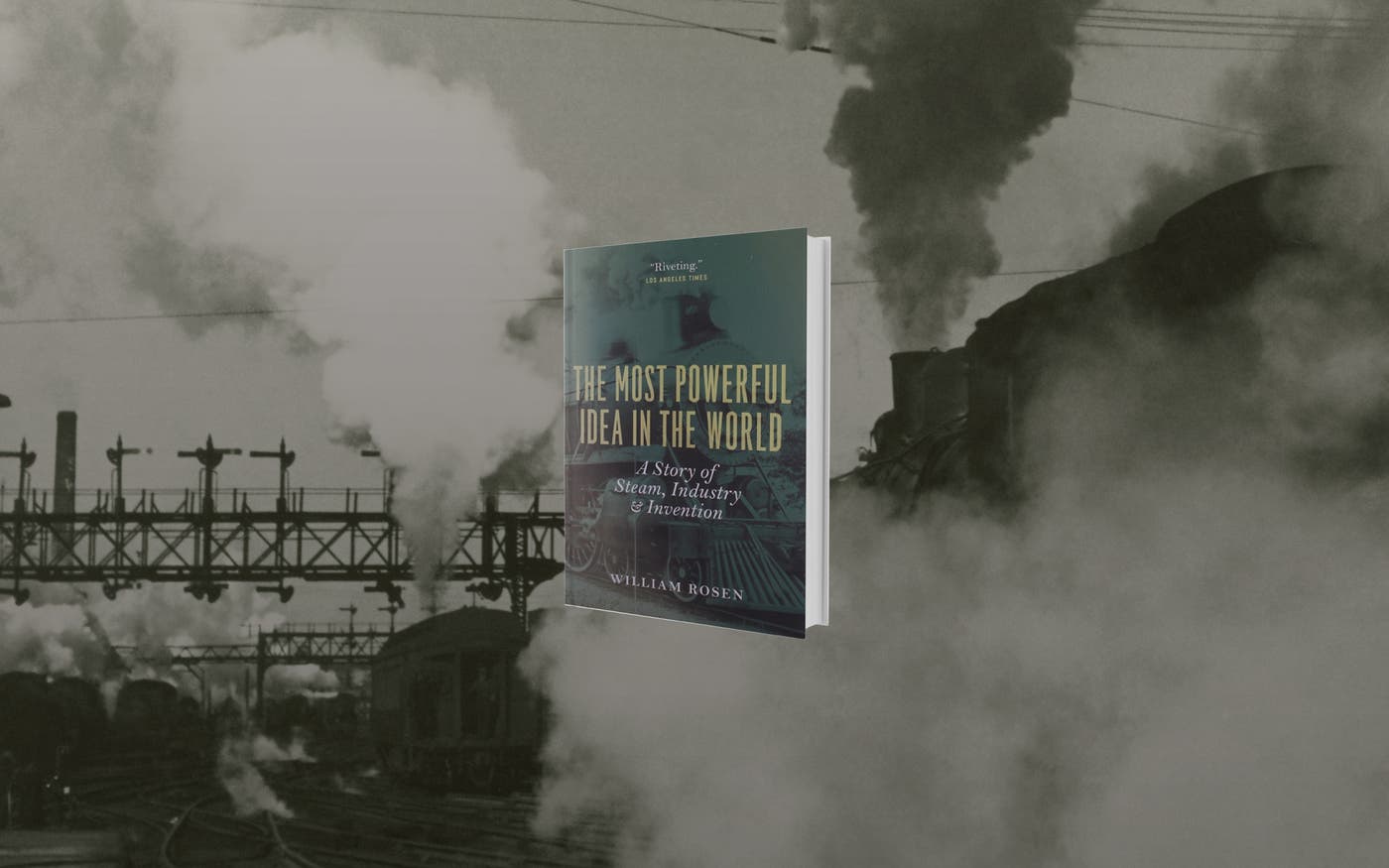
Steam
The steam engine and the Industrial Revolution
The Most Powerful Idea in the World is an entertaining narrative weaving together the clever characters, incremental innovations and historical context behind the steam engines that gave birth to our modern world.
In the summer of 2009 I wanted to read the amazing story told by The Most Powerful Idea in the World. Author William Rosen just hadn’t written it yet.
That summer Melinda and our kids were in London on a vacation packed with a lot of learning. We spent huge amounts of time at the British Museum and toured many great historical sites. Over the course of a few afternoons, my son and I explored the Science Museum, where we found the “Rocket,” a steam locomotive that in 1829 pulled three-times its weight at a then-breathtaking 30 miles an hour. That feat won the Rocket’s inventor a railroad contract and minted a basic locomotive design that was used for the next 100 years.
Seeing the Rocket on the ground floor of the museum you could imagine how many innovations must have come together to build this iconic machine. A product of British ingenuity, the Rocket also arrived towards the end the Industrial Revolution, which was tightly tied to the advent of steam power.
That history had long interested me; our visit to the Rocket piqued it. But I couldn’t find a book that brought the story to life until the end of last year when I picked up Rosen’s chronicle of the rise of the steam engine. Published in 2010, The Most Powerful Idea in the World is an entertaining narrative weaving together the clever characters, incremental innovations and historical context behind the engines that gave birth to our modern world.
Rosen describes a “thousand threads” of developments dating back to the beginning of the modern world that culminated with the Rocket but also fueled the creation of increasingly better steam engines through the 18thth and 19 centuries. Ancient Egyptians recognized the power of steam and France made some advances. But it was only in the 1700s in Britain that it was commercialized. Rosen colors in the assortment of scientists, entrepreneurs and tinkerers who made it happen—people like Thomas Savery, William Newcomen, James Watt and Matthew Boulton.
The book’s premise is that the Anglophone world—England, Scotland, Wales and America—was the epicenter of the Industrial Revolution because it “democratized the nature of invention.” Rosen makes a compelling argument that the steam engine is the quintessential example of that democratization at work.
I won’t spoil it by telling all the reasons why, but suffice it to say one of the most important was the advent of patent protection. Patents were a holdover of monopolies granted by kings over businesses such as sugar and tobacco, later evolving into the policy that people should be able to control their own inventions. That, of course, encouraged invention. Many of the early patents covered various aspects of steam power.
The book also highlights what is often an underestimated force in innovation: basic tools. Among the most important in the rise of steam power are measuring tools. Rosen argues that only with the ability to measure incremental advances—such as whether a lighter part lowers fuel consumption, or one engine produces more power than another—can you achieve sustained innovation. Rosen’s view fits my own view of the power of measurement to advance the work of our foundation. (I focused my 2013 Annual Letter from the foundation on measurement and the amazing things you can accomplish in global health, education and other areas if you set clear goals and can measure your progress toward them.)
Rosen has a facility for the telling anecdote and the quirky aside. Open nearly any page of the book and you’ll learn tidbits like that Abraham Lincoln had a love of things mechanical and is the only American president to be awarded a patent (for air chambers that add buoyancy to steam ships and other boats). Early in the book there’s a reference to “Monty Python and the Holy Grail” and Aristotle in the same paragraph.
The Most Powerful Idea in the World is enjoyable reading, although it does go into a lot of detail about steam engines, and you will learn more about how they work than you might expect. With that one footnote, I highly recommend the book.

Generation of Change
Complex leader of a complex country
If you’re going to read one book about modern China in the period after Mao, then this is the book you should read.
Though the book is framed around the rise of Deng Xiaoping and his reforms that transformed China into an economic powerhouse, Ezra Vogel’s compelling biography examines how China went from being a desperately poor country to certainly one of the two most important countries in the world today.
A Communist revolutionary and military commander under the brutal rule of Mao Zedong, Deng emerged as China’s capable leader in 1978 for fourteen years. For all of Deng’s success leading China out of poverty, he cannot escape the central role he played in violent attacks on landlords in 1949, or intellectuals in 1957 or the tragic killings in Tiananmen Square under his own leadership in 1989.
Deng was a strong believer of socialism although he supported a market economy and created an export model of economic development. Subsequently China’s economy grew at over 10% per year for 20 years.
As part of our work at the Foundation we strive to improve 10 or 20 million lives in the areas of global health and global development. We have discovered new approaches and created new tools to get vaccines, AIDS drugs and contraceptives to the people who need them, and advanced agricultural innovation to transform farmers’ lives so that they can feed their families.
But, China’s reforms coupled with the tenacity and hard work of its people has improved hundreds of millions of people’s lives in less than a generation. That is more human lives climbing out of poverty post World War II than any other country.
Today, about 15 percent of people in the world - over 1 billion people - live in abject poverty. Fifty years ago, 40 percent of the global population was poor. The massive reduction in poverty is due in part to the “Green Revolution,” in the 1960s and 1970s where researchers produced seeds that helped farmers vastly improve their yields. And because of China. One country alone has lifted 500 million people out of abject poverty.
China in 1979 was one of the poorest countries in the world, far poorer than India. They were barely scratching out a living and their population density made it difficult for them to feed their population. There was very little to build on other than the fact that the party had incredible authority. With this authority, Deng set in motion a series of critical changes early on in his leadership to achieve cultural stability and significant economic growth.
Surviving the Great Famine of 1961 where millions died, Deng reformed the land system and increased agriculture production, initially in just one part of the country. He extended farmers’ land leases and encouraged them to profit from any grain they grew over and above what they owed. He introduced high-yielding varieties of cereal grains and synthetic fertilizers emulating the best innovations of the “Green Revolution”. As a result the agricultural sector exploded with farmers producing three times as much in 10 years, all with less labor.
Where before they taxed poor farmers to bootstrap the industrial commune, the workers who were no longer needed in the fields moved into the cities and created a robust industrial sector.
To support a high growth industrial sector, Deng fostered education and built new schools and institutions of learning to underpin the economy. He also endorsed students and business people to travel internationally to study and learn from other countries. China’s success in part has been its ability to synthesize what successful economies have done well and leapfrog history and the competition.
Vogel, an emeritus professor at Harvard University, demonstrates a deep understanding of China’s complex culture and draws on extensive research and his East Asian experience as an intelligence officer for the Clinton Administration. In a recent New York Times interview, Vogel said, “with this book, I thought I could write something new that would educate Americans about China.” I think he absolutely achieves this. Vogel also helps his readers navigate the labyrinth of people and places with mini bios and a map that was an invaluable reference when reading his book.
Although Deng’s transformation of China cannot be separated from the violent attacks that he administered under Mao’s rule or the brutal approach he took to stopping the Tiananmen Square student protests, the economic reforms have improved the livelihoods of millions of people. China has capitalized on advances in education, healthcare, agriculture and innovative technology to help accelerate their own development and transition beyond the need for aid.
To have done this essentially in one generation is an unbelievable accomplishment and is unique in the history of the world.


